First: A few pics from our afternoon sail on the Nile yesterday afternoon.
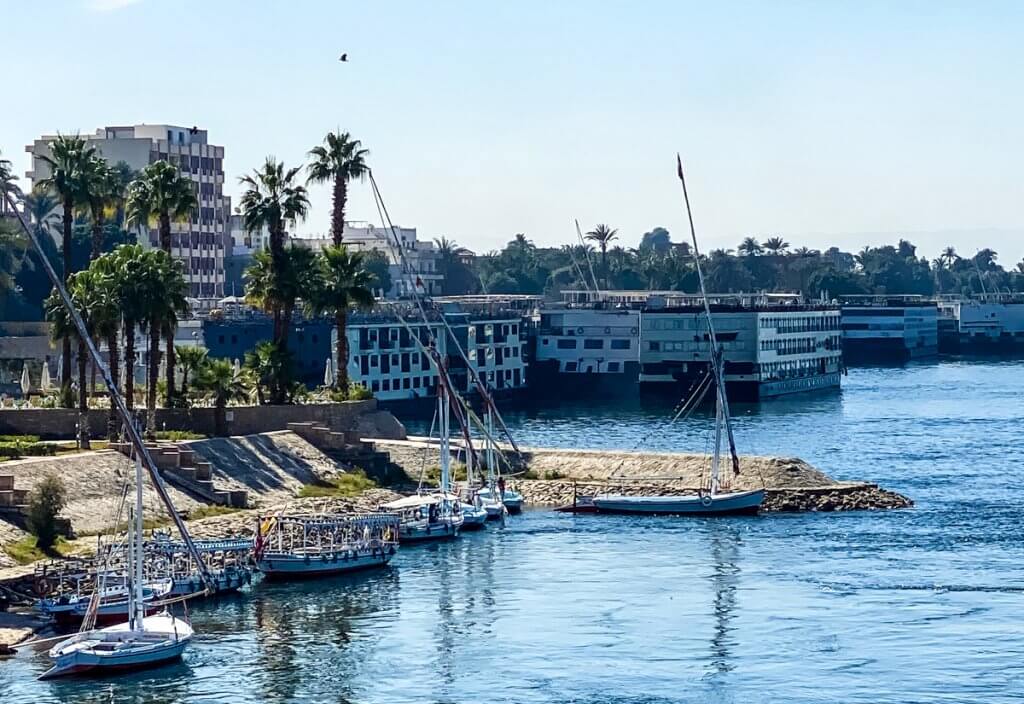
About to leave Esna for Edfu on our way to Aswan. 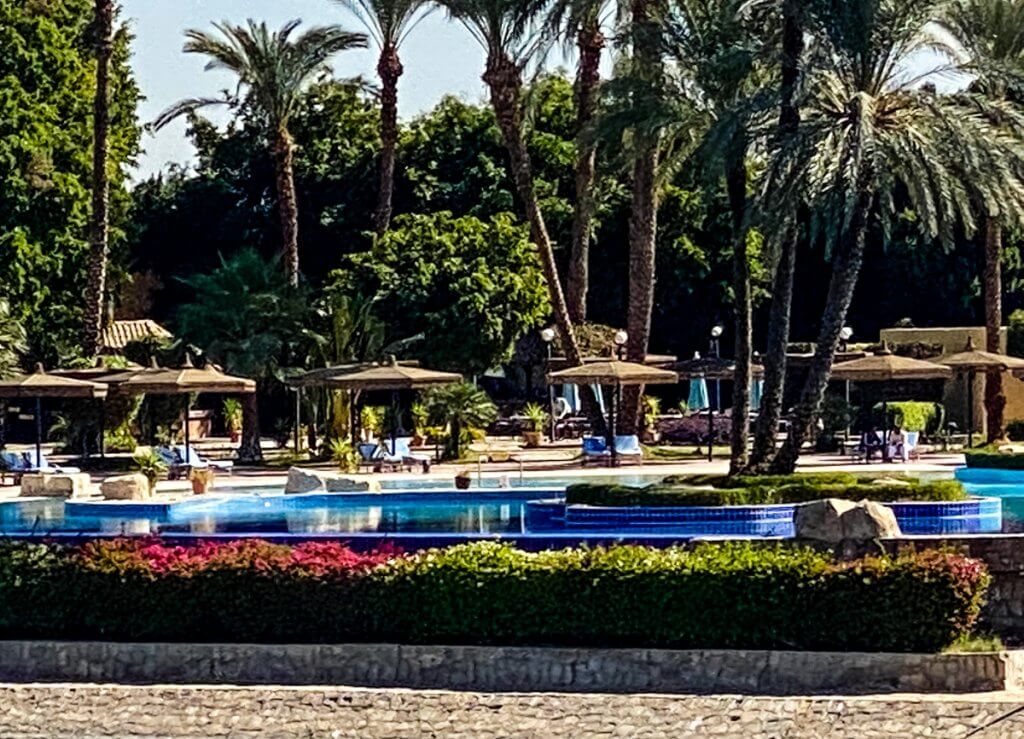
Our views of the shore ranged from this high-end resort…. 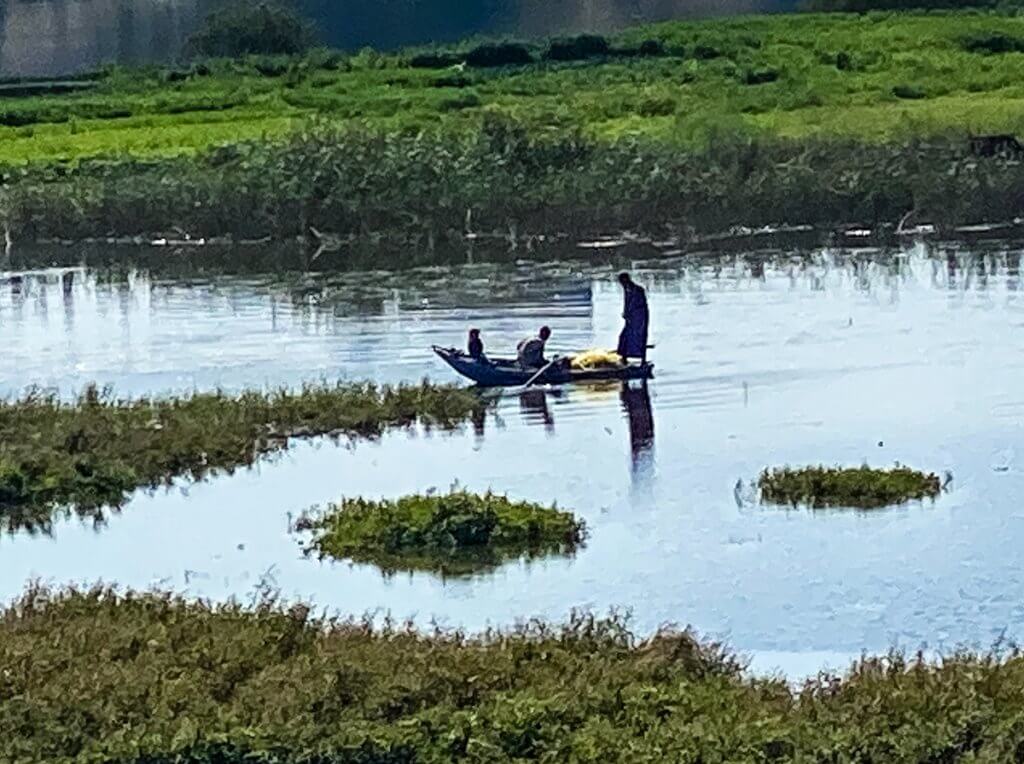
….to these fishermen…. 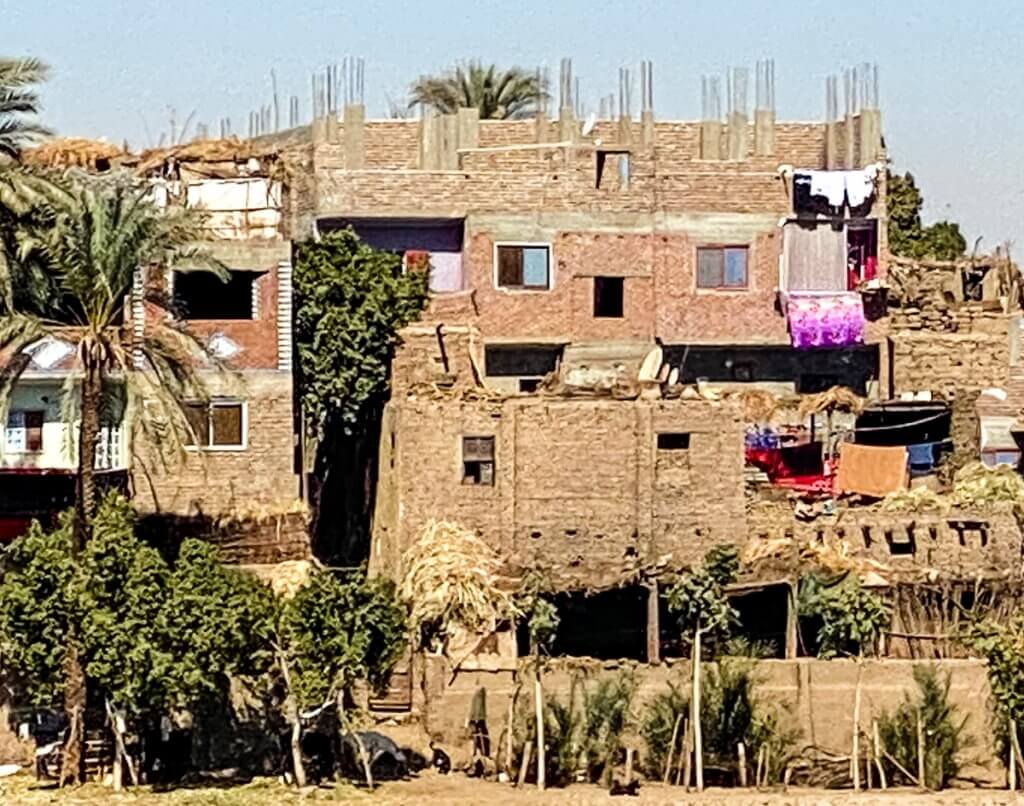
….to these houses….and everything in between. 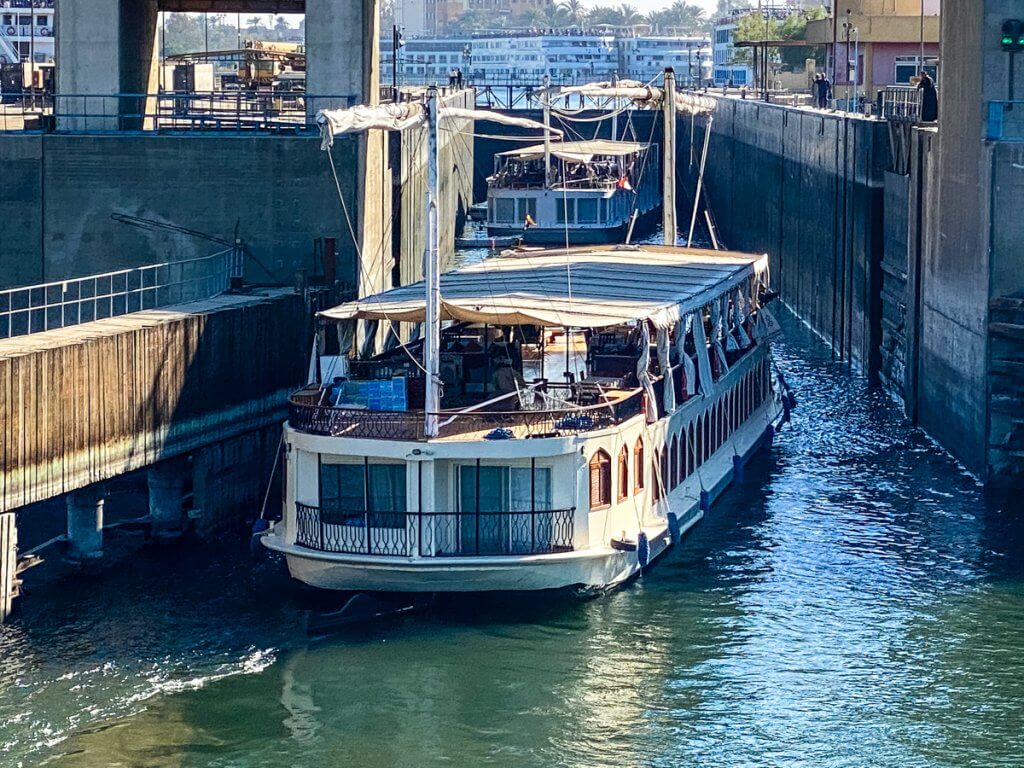
Waiting our turn for the lock as we made our way up the Nile… 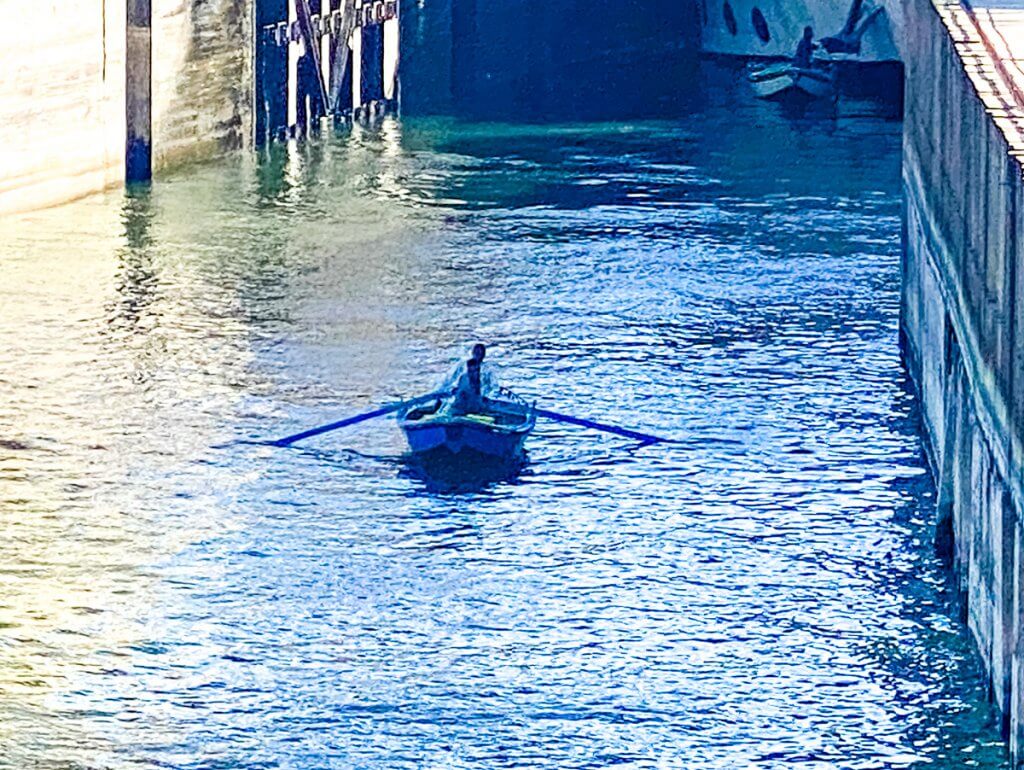
…And saw this rowboat coming our way. 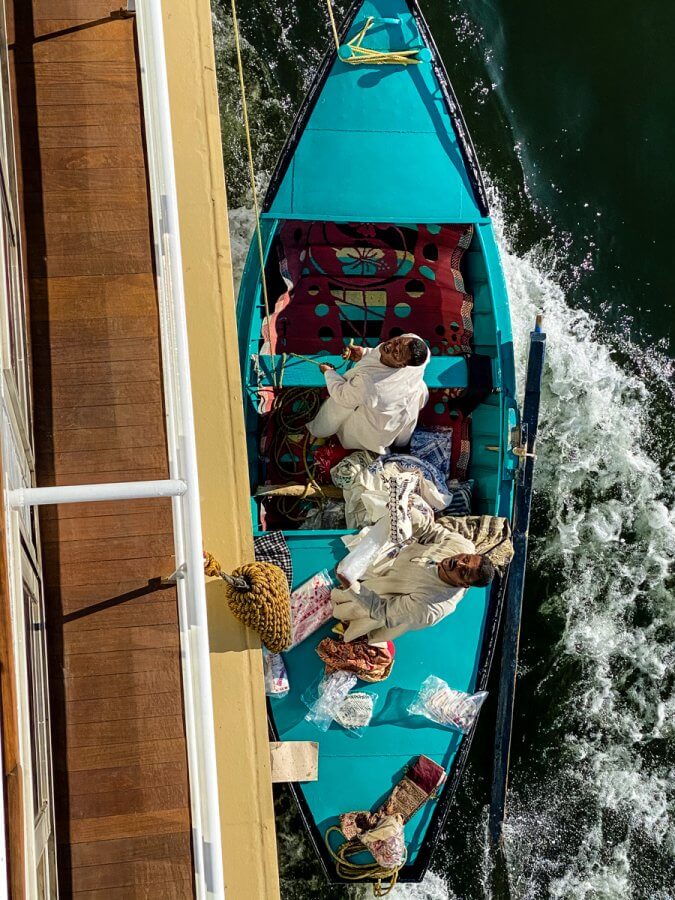
These guys were selling shawls, tablecloths, etc. They could throw them up to the fourth floor lounge deck and never miss – not a one lost to the Nile!
Day 3: The Temples of Edfu and Philae
We awoke to our prime parking spot in Edfu (other boats’ passengers had to cross through our boat to get to shore).
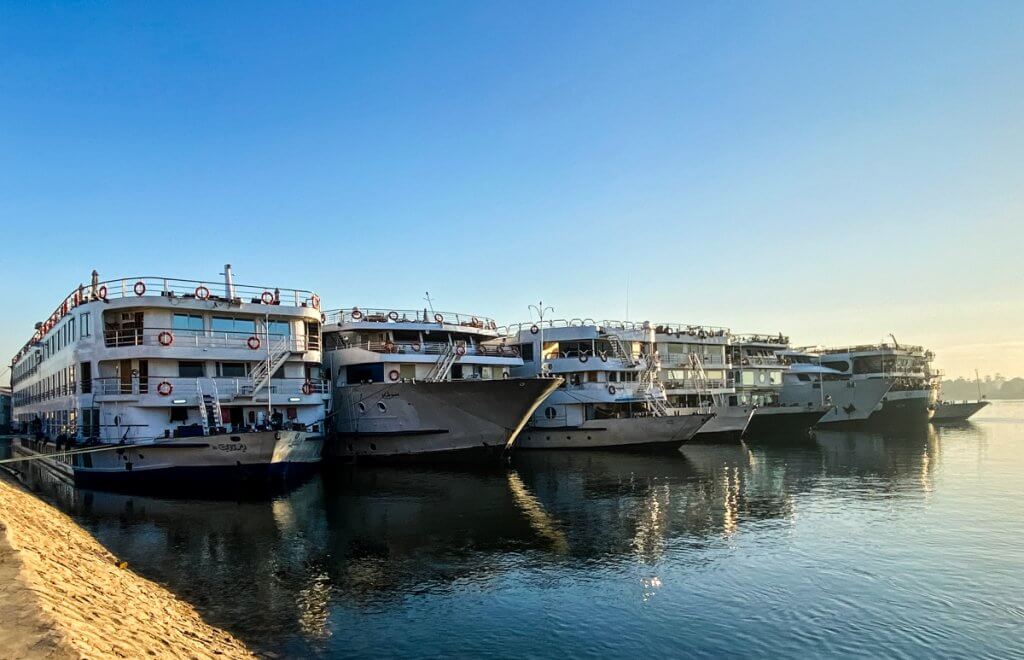
This morning in Edfu we counted 31 riverboats moored there, sometimes 8 abreast. 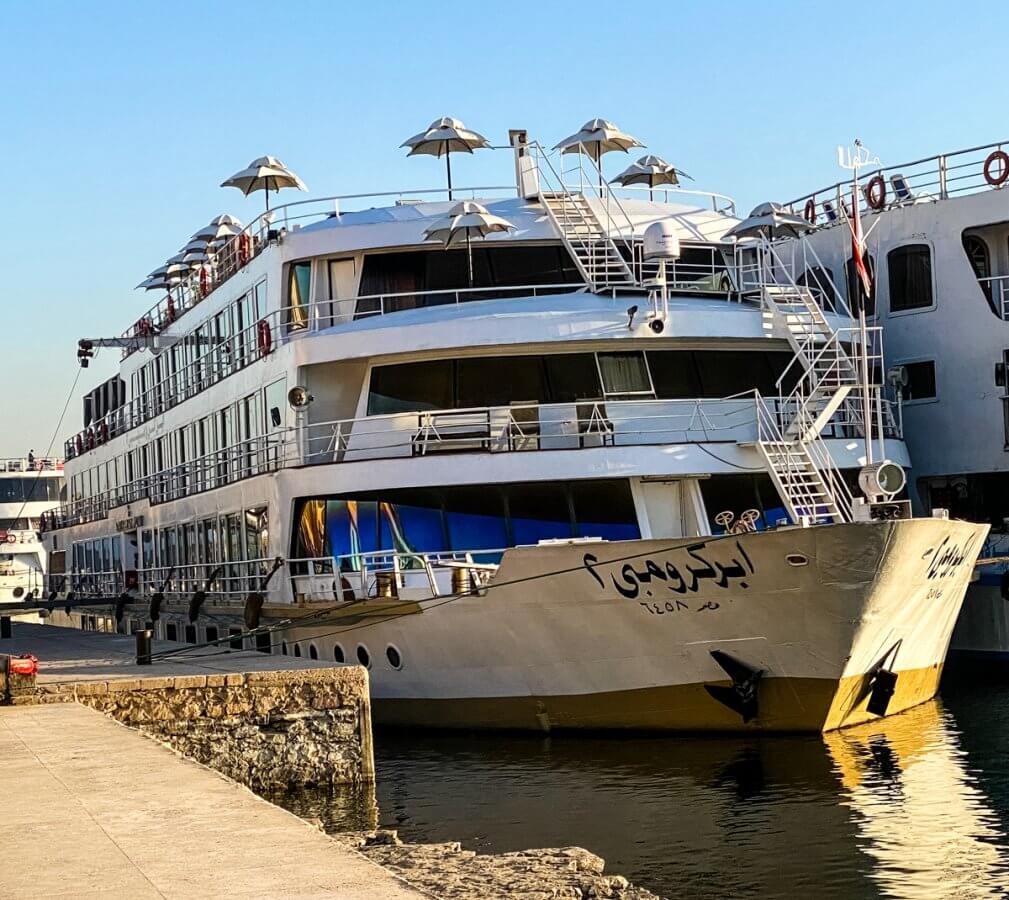
Our boat was definitely one of the nicer ones.
The morning began with a visit to the Temple of Edfu, dedicated to Horus. According to myth, the god Osiris was chosen instead of his brother Set (Seth) to rule. Seth then killed Osiris and cut him into 16 pieces and scattered him. Isis collected his pieces, and restored her husband’s body. (Egyptian mummies were wrapped in one single long piece of linen due to Isis’s use of this method to put Osiris back together, aiding the ability to be resurrected). Isis and Osiris (posthumously) then conceived their son, Horus, without Isis defiling herself. (Any of this sounding familiar?)
The falcon-headed god Horus went on to fight many battles with his uncle Seth, now god of the Underworld, to avenge his father’s murder. He apparently fought his last great combat with Seth here, which is probably why Horus was particularly revered in this area.
While no records suggest when Christians first migrated to Egypt, present-day Christians believe that Saint Mark founded the Church of Alexandria, one of the original four main sees of Christianity, about 41 AD. With persecution of Christians raging across most of the Roman world, the Christian population in Egypt steadily grew, making Alexandria one of the principal centers of the Christian world by 200 AD. The parallels in the Christian stories (Cane and Abel, the Immaculate Conception) to the Ancient Egyptian stories made it easy for Egyptians to latch on to Christianity. That and the need to exert some will against the Greeks and Romans, who – history suggests – had ruled them so cruelly and oppressively for hundreds of years.
The Temple of Edfu is the most complete in Ancient Egypt, not just its construction, but the texts contained within. Its discovery answered so many questions before unexplained to historians.
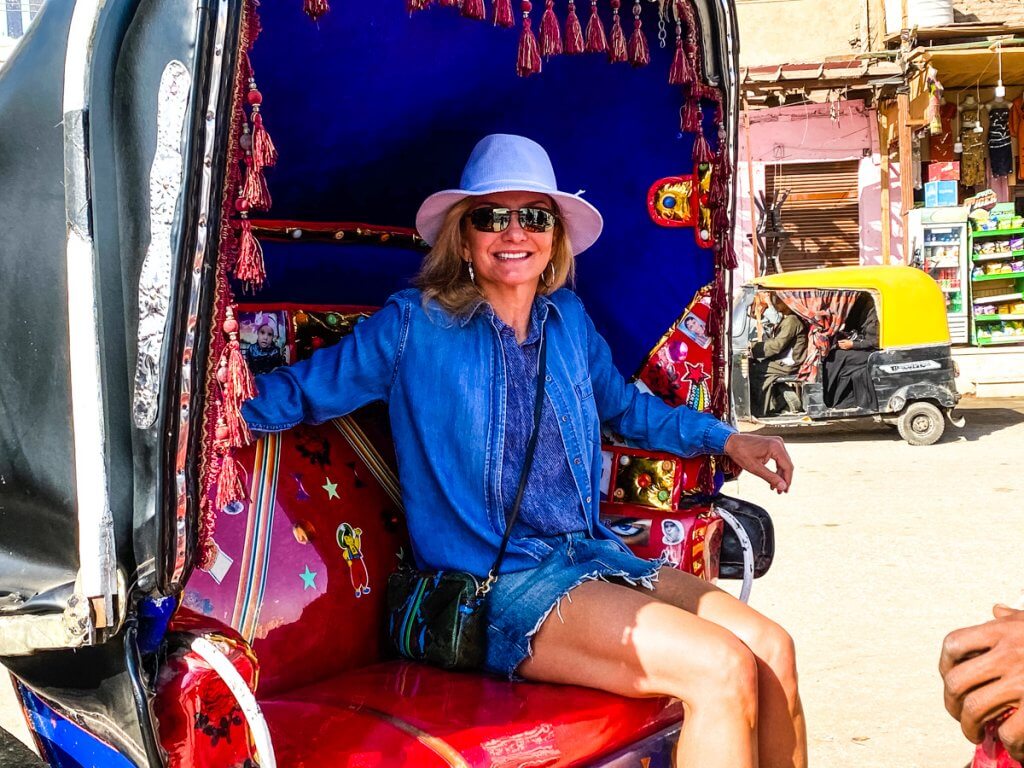
About to go for a buggy ride to visit the Temple of Edfu. 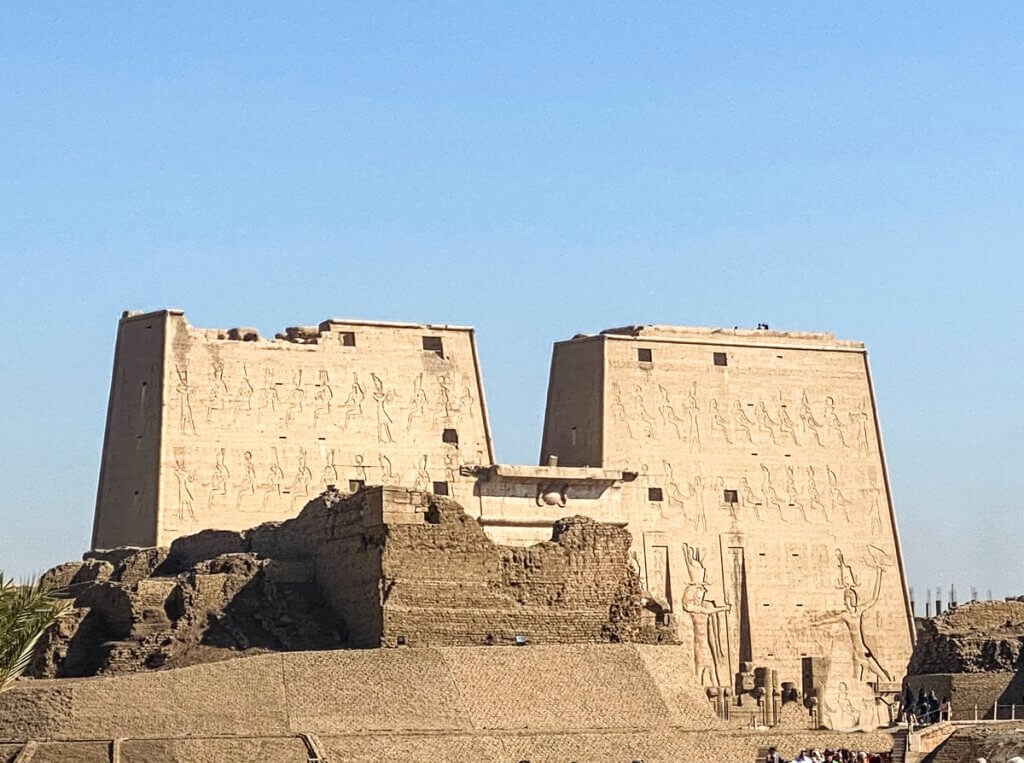
Built during the Hellenistic period in Egypt (300 to 30 BCE), the inscriptions on the walls of the Temple of Horus provide much useful information on the religion, language, and myths of the time. Over the centuries, the temple had become buried to a depth of 39 feet beneath drifting desert sand and layers of river silt deposited by the Nile. Local inhabitants built homes directly over the former temple grounds. Only the upper reaches of the temple pylons were visible by 1798, when the temple was identified by a French expedition. This burial of the temple actually help to preserve it quite pristinely.

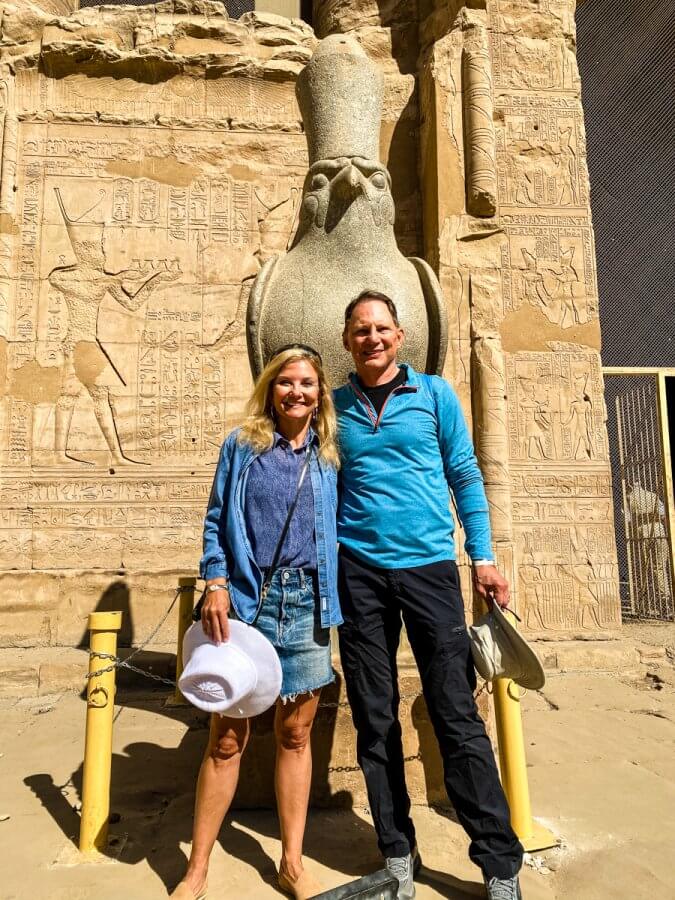
The surviving black granite statue of Horus, which would have originally been part of a pair, wears the double crown of Egypt and guards the door into the farther reaches of the temple. 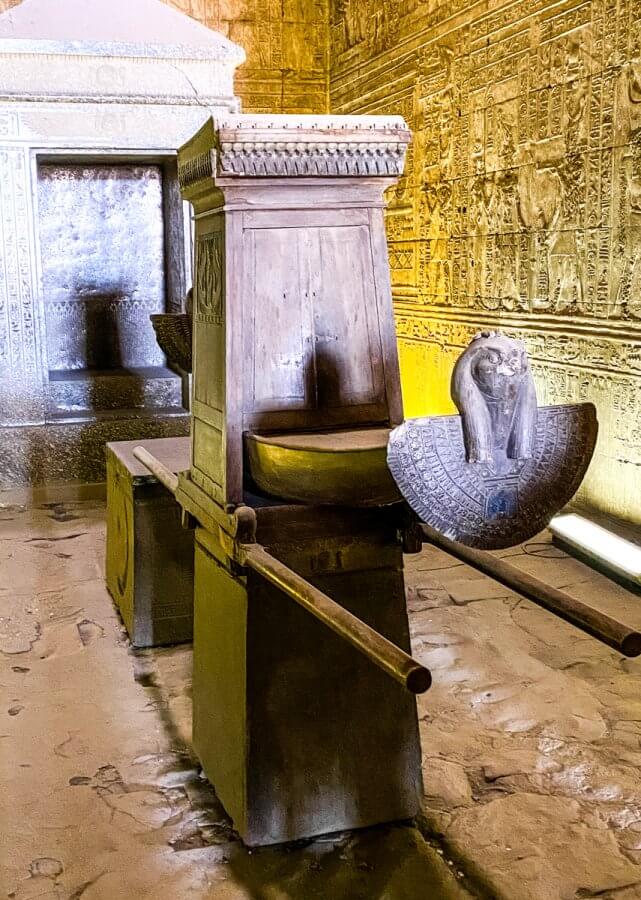
For carrying the golden statue of the god in processions and festivals. In the Sanctuary: The Room of the Gods.
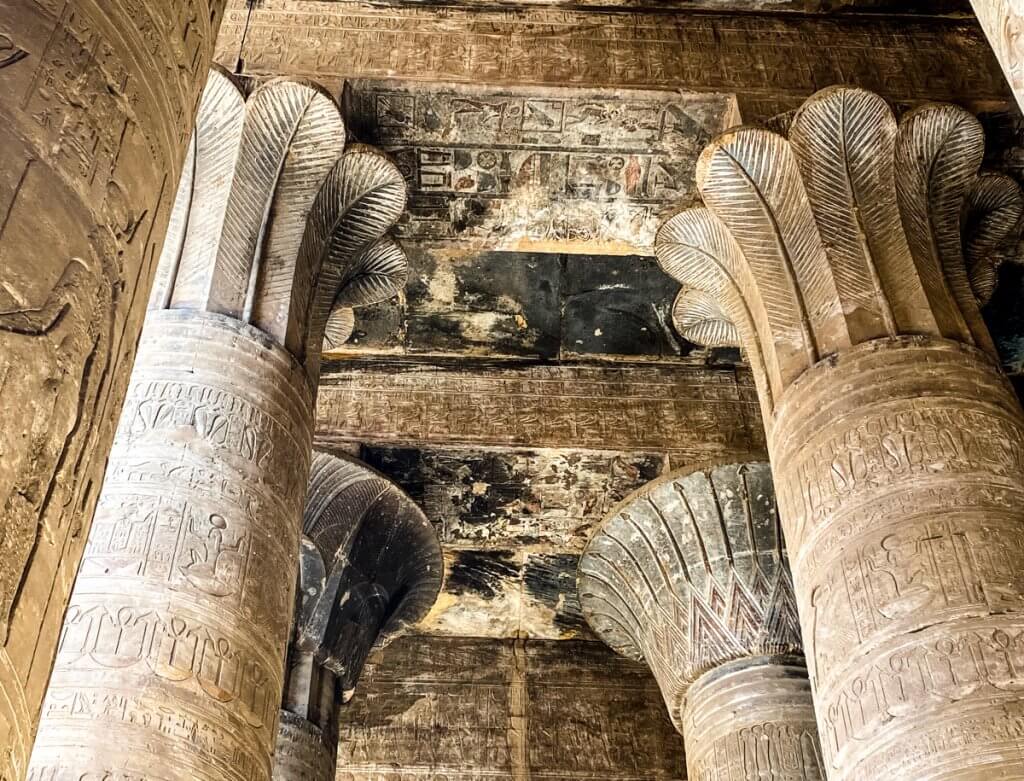
The columns are richly decorated with floral and palm capitals. 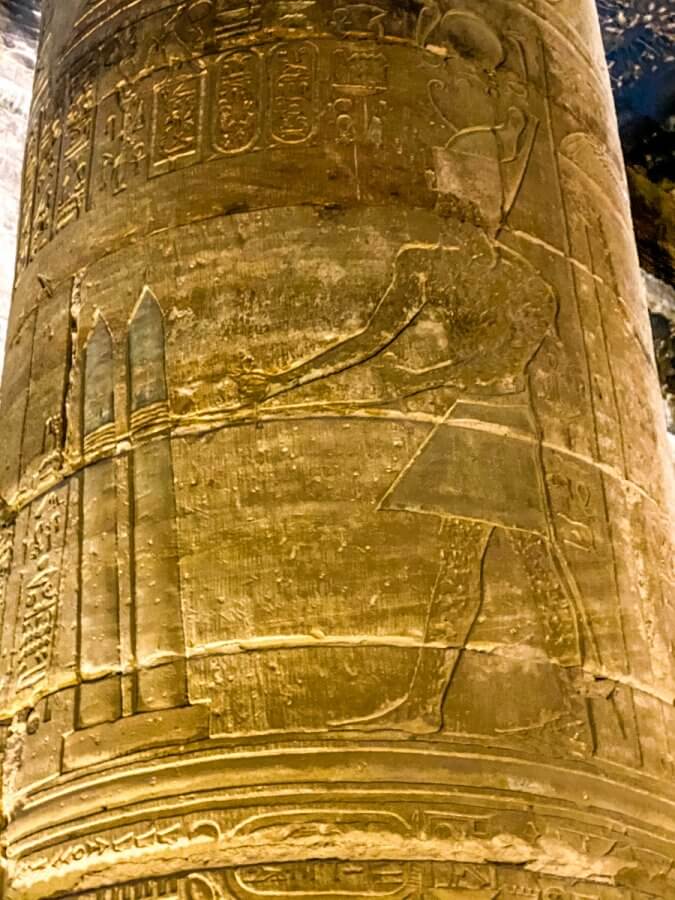
Depiction of the raising of giant twin obelisks. 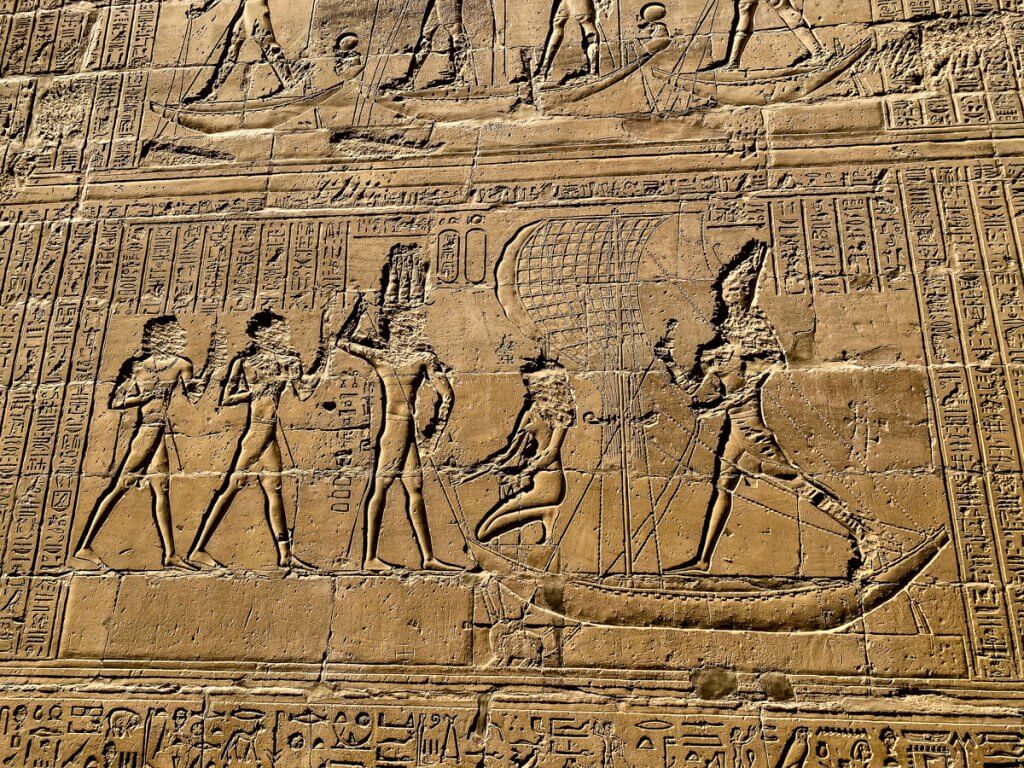
The procession of the pharaoh through the underworld in his boat. Note the sails. 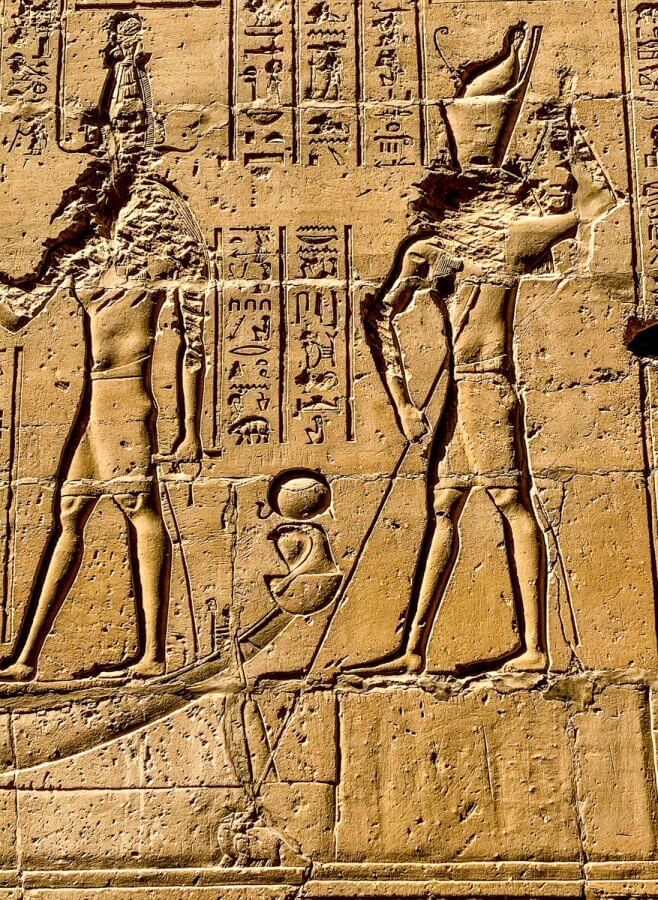
Several interesting reliefs depict the battles between Horus and the god of the underworld, Seth. In the scenes, Seth is depicted as a tiny (defeatable!) hippopotamus that the king and Horus are hunting.
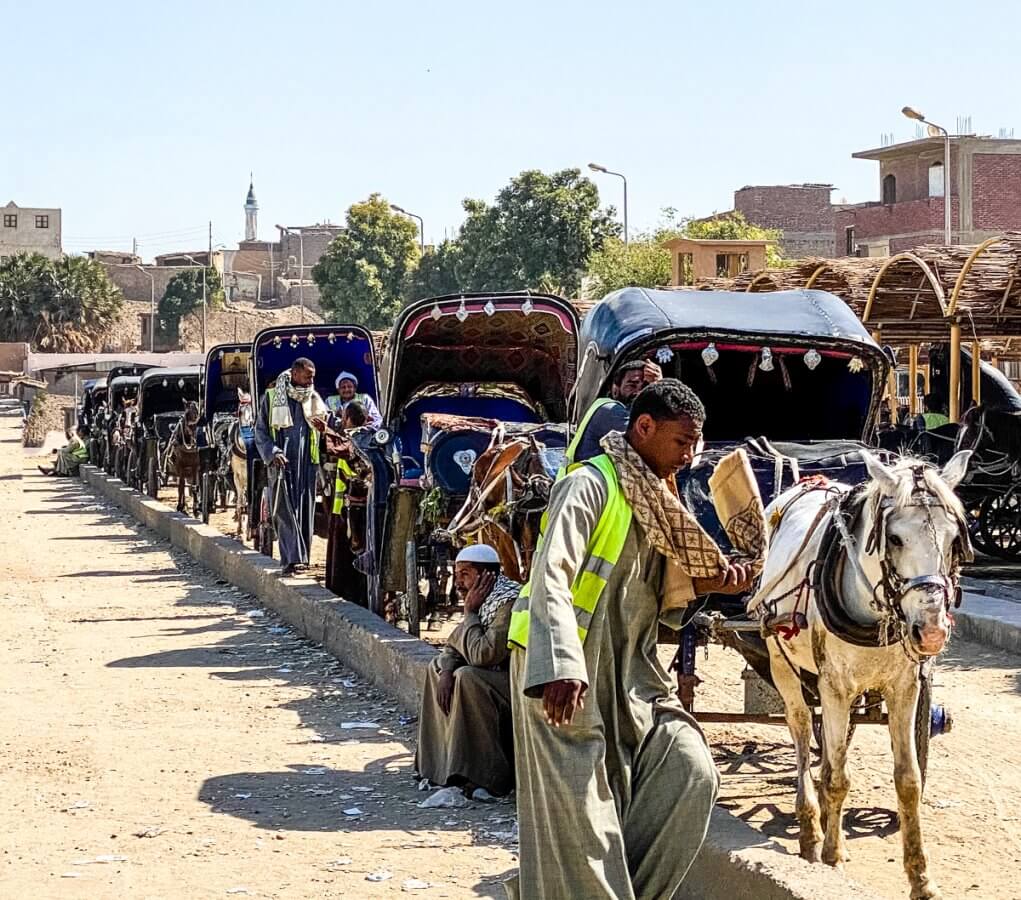
The buggies lined up outside the Temple of Edfu waiting to take visitors back to the marina.
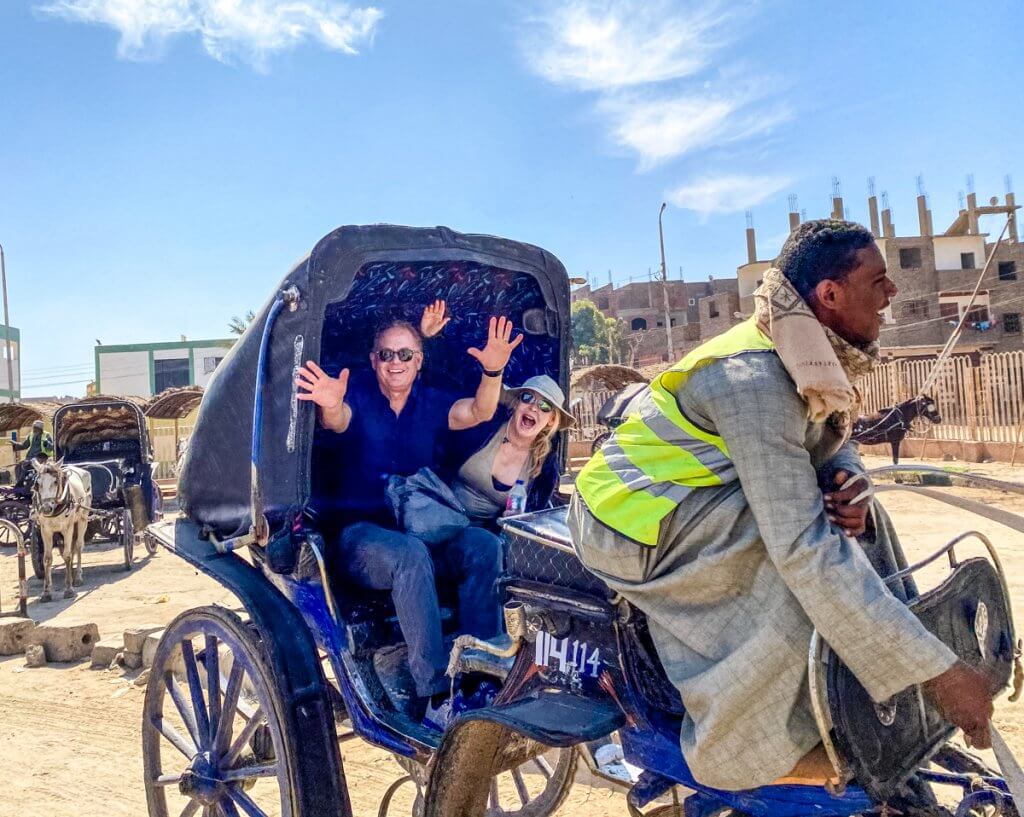
Crazy tourists in Edfu!
We then cruised on to Aswan in the afternoon and evening. This happened to be February 4 … Shauna’s birthday!!!
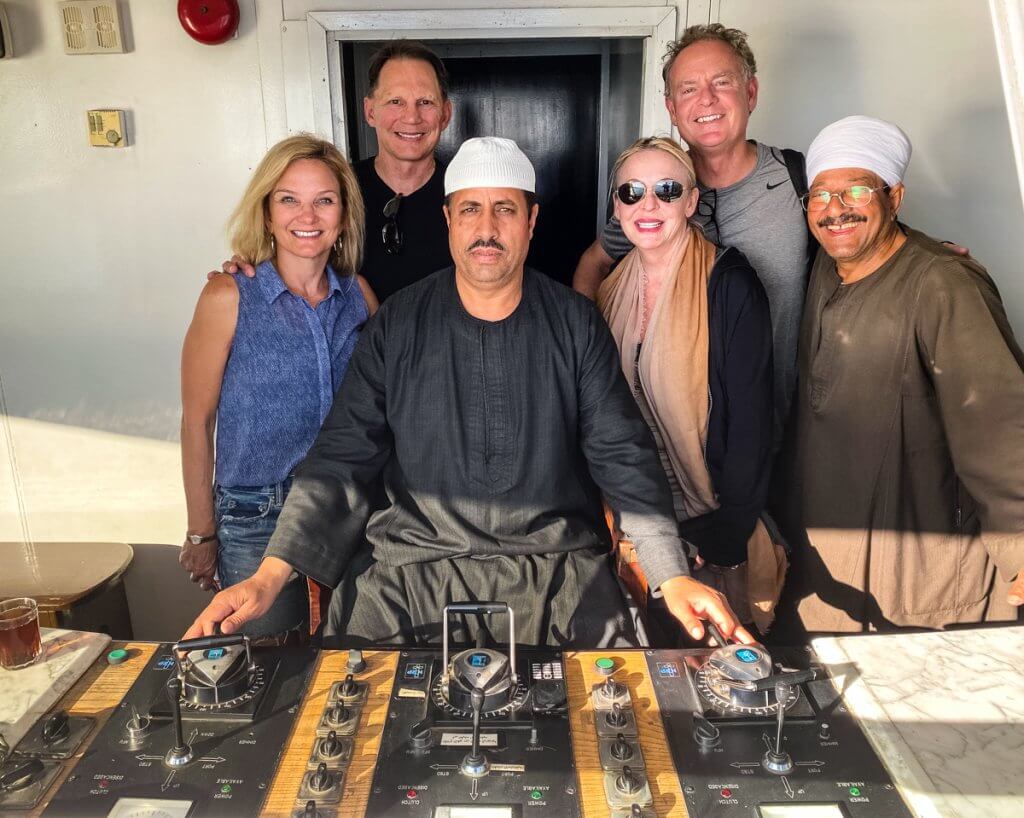
We visited the bridge and took a pic with the captain and his first mate, both of whom had grown up on the Nile and know its every facet. 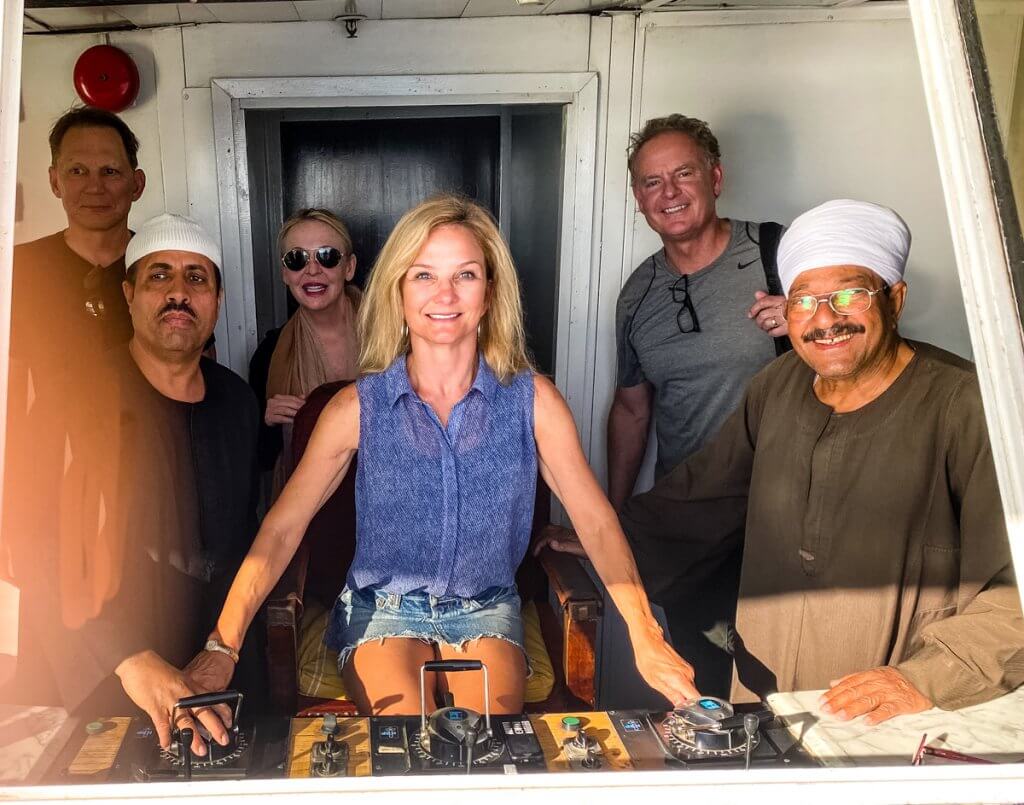
He offered to let Shauna sit in his seat and pose for a picture. Notice his hand on hers as soon as she actually started to steer. 
An Egyptian toast for the regal Birthday Girl. 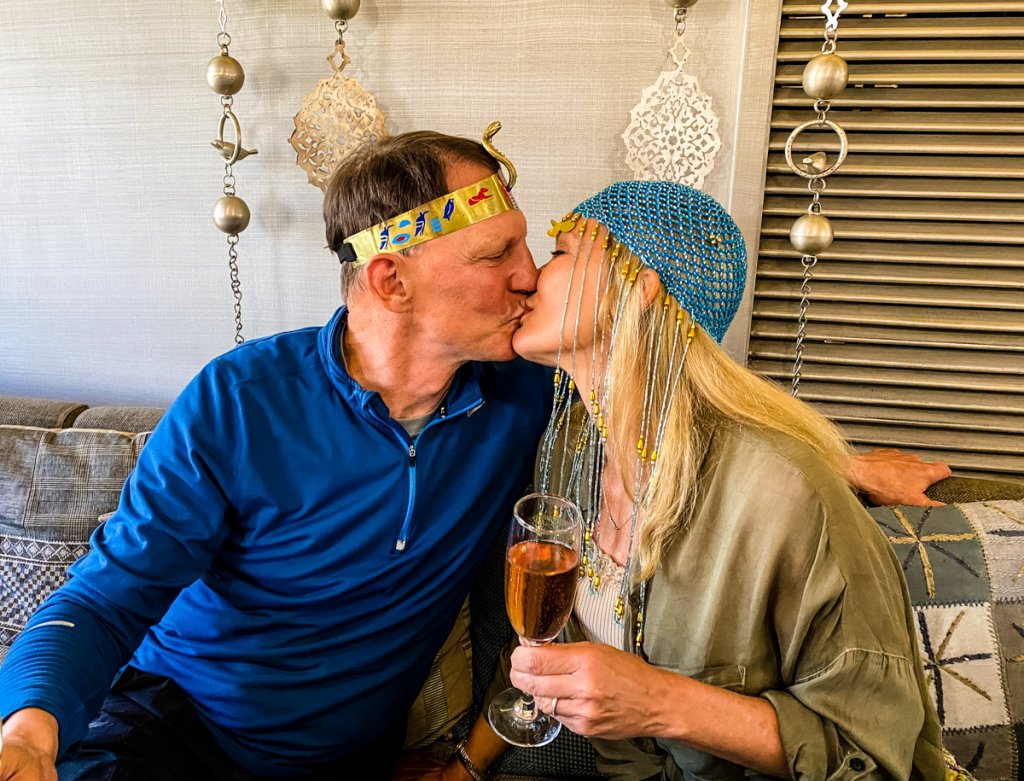
February 4…Happy Birthday Shauna!!! 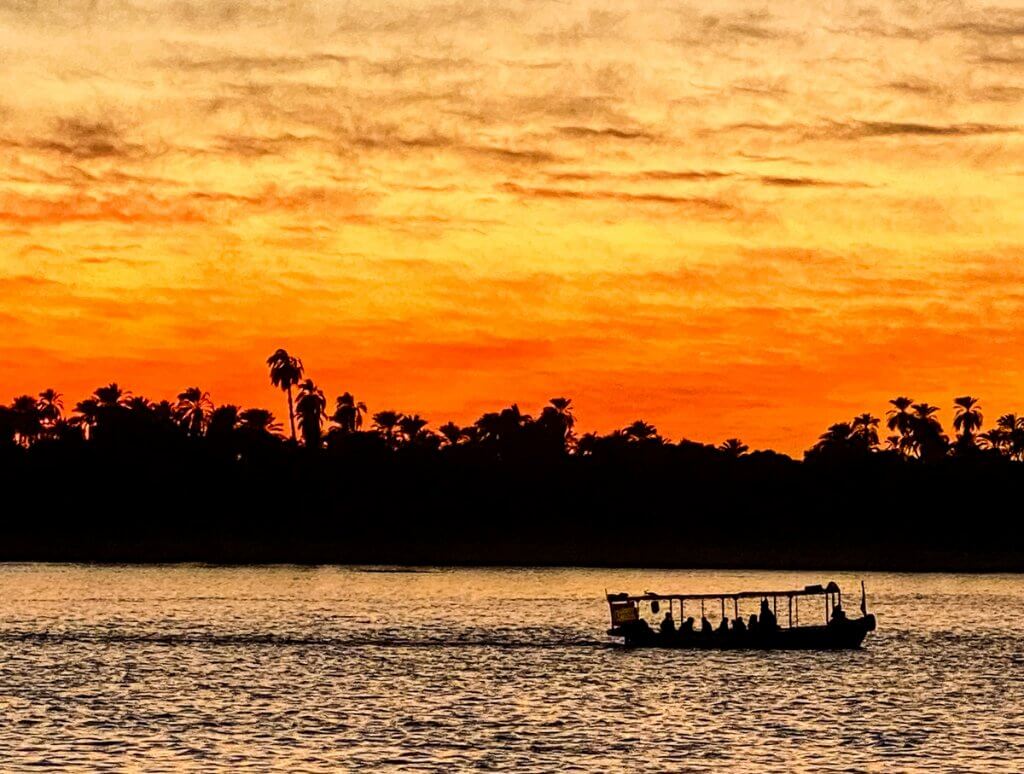
Our sunsets on the Nile were as majestic as we had imagined. A special birthday sunset indeed.
Day #4 – Philae Temple and Felucca Sailing
Our last full day on board the boat began with a morning tour to the majestic Philae Temple on the Island of Agilika.
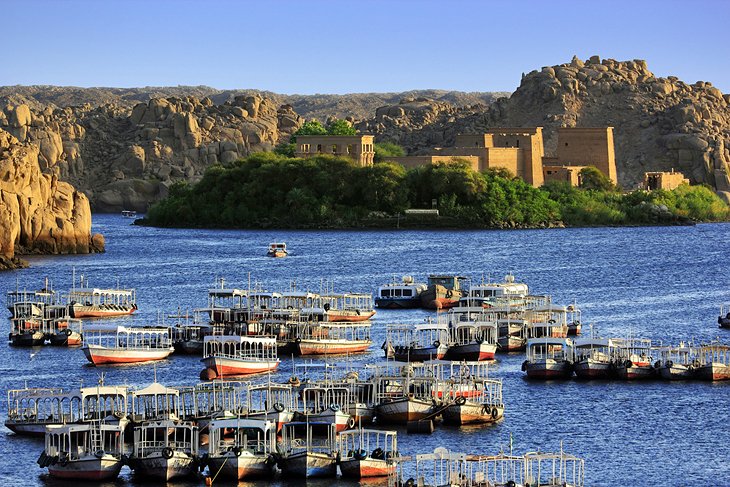
But the temple wasn’t always on the Island of Agilika as shown here. The original site, Philae Island, and the surrounding area had been periodically flooded since the initial construction of the Aswan Low Dam in 1902. Saved from a watery grave by UNESCO’s Nubia Campaign 20-year rescue project during the building of the Aswan High Dam, the temples were dismantled and transferred block by block from their original place on Philae Island to Agilika Island near Aswan.
Under the project, a total of 22 monuments and architectural complexes were relocated with the assistance of 40 technical missions from five continents. Thanks to this, we and other travelers are still able to wander among the columns of these ancient venerated sites.
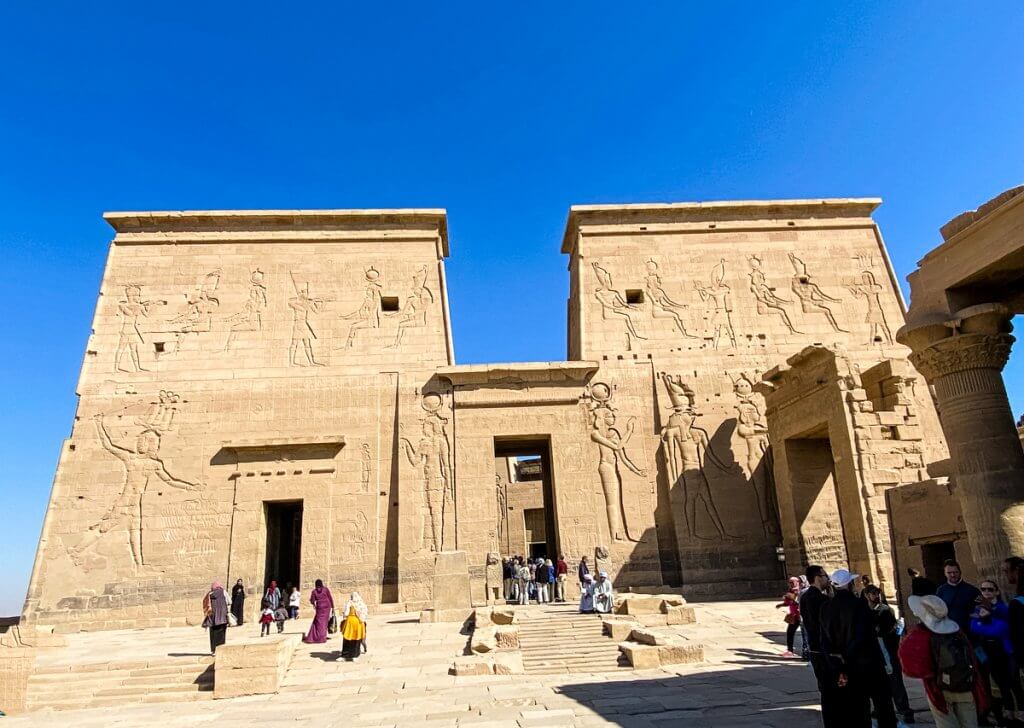
The front pylons of the Philae Temple.
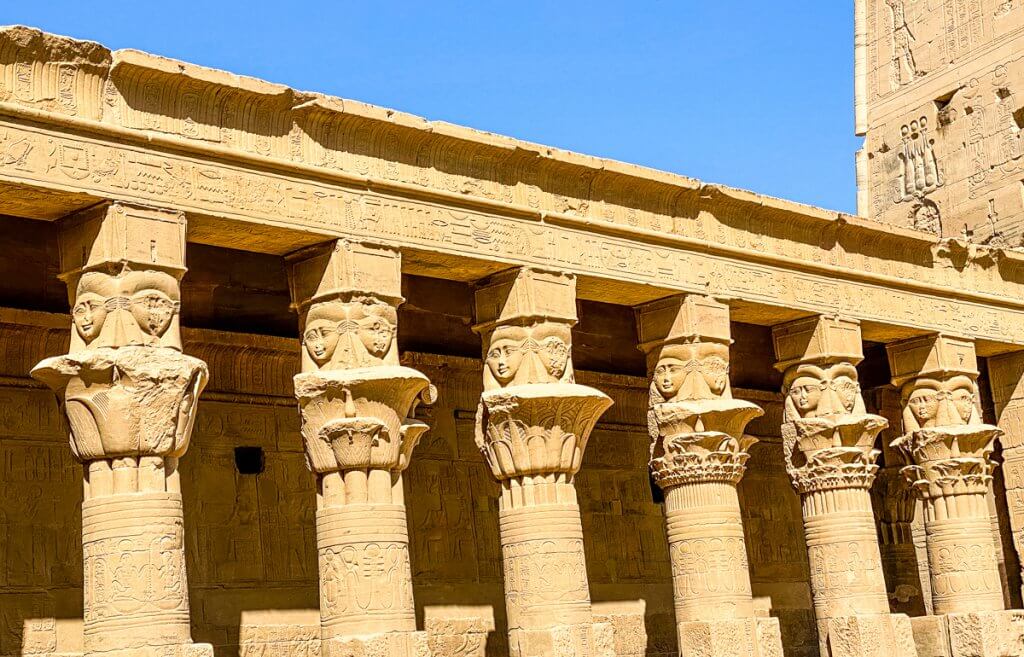
The hieroglyphic reliefs of the temple complex, which go from frowning to smiling as your view moves from right to left. 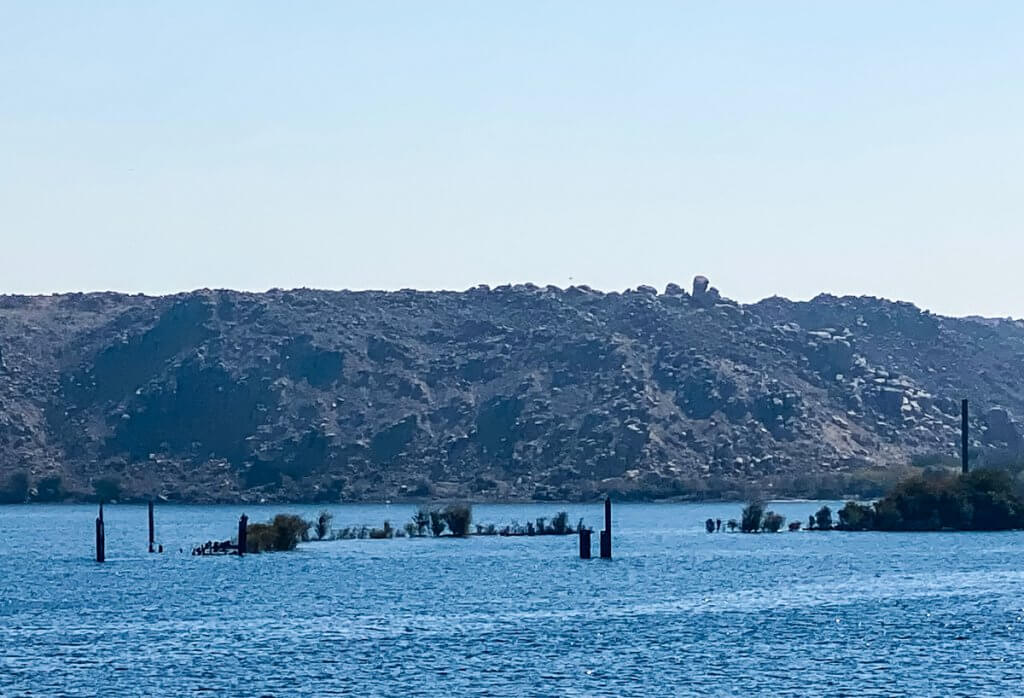
Philae was originally located here in the foreground (which is now underwater). 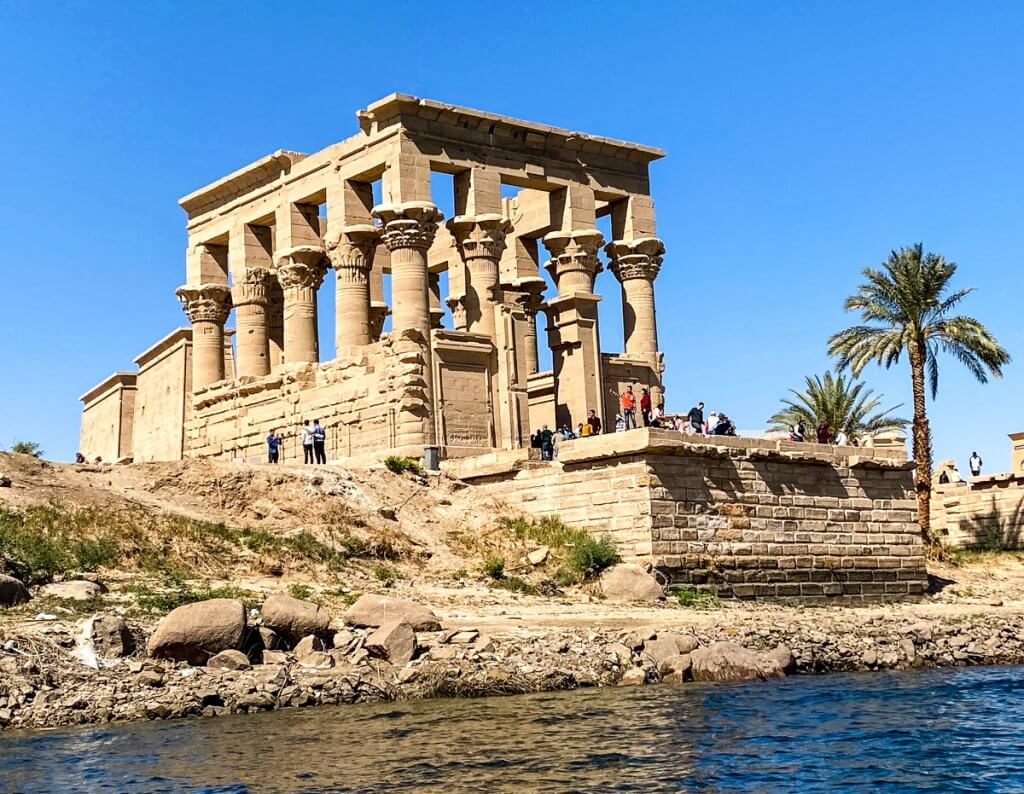
The temple complex was dismantled, piece by piece, moved to nearby Agilkia Island and then reconstructed. 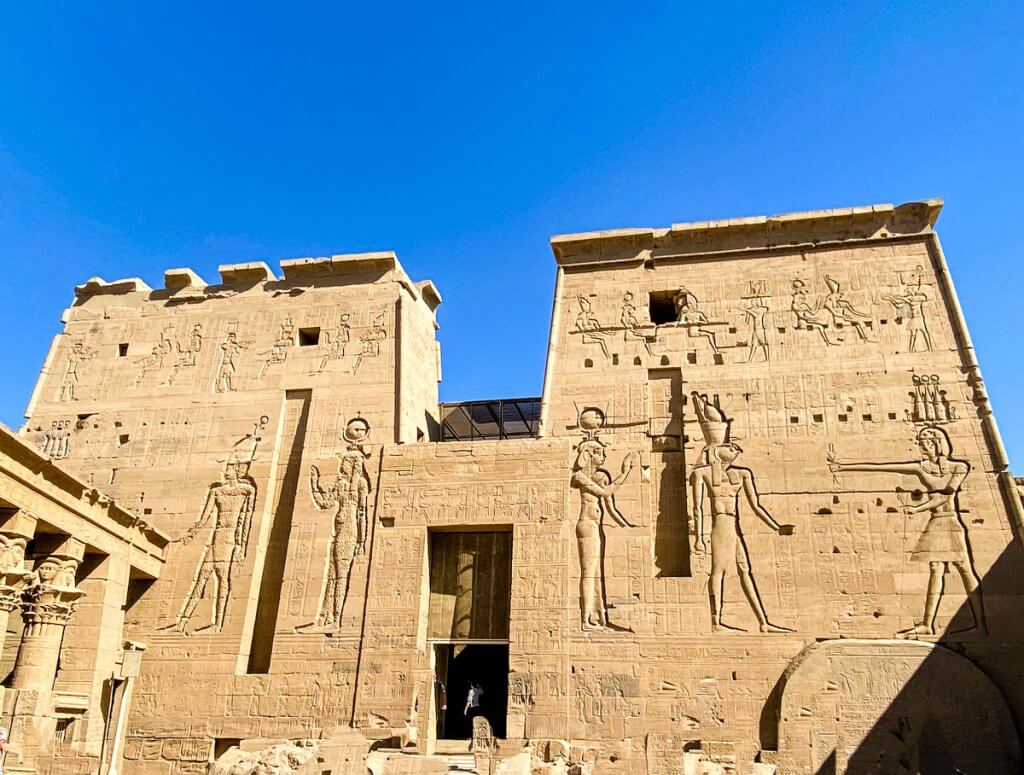
Thank goodness this important well-preserved temple was saved by the UNESCO project. 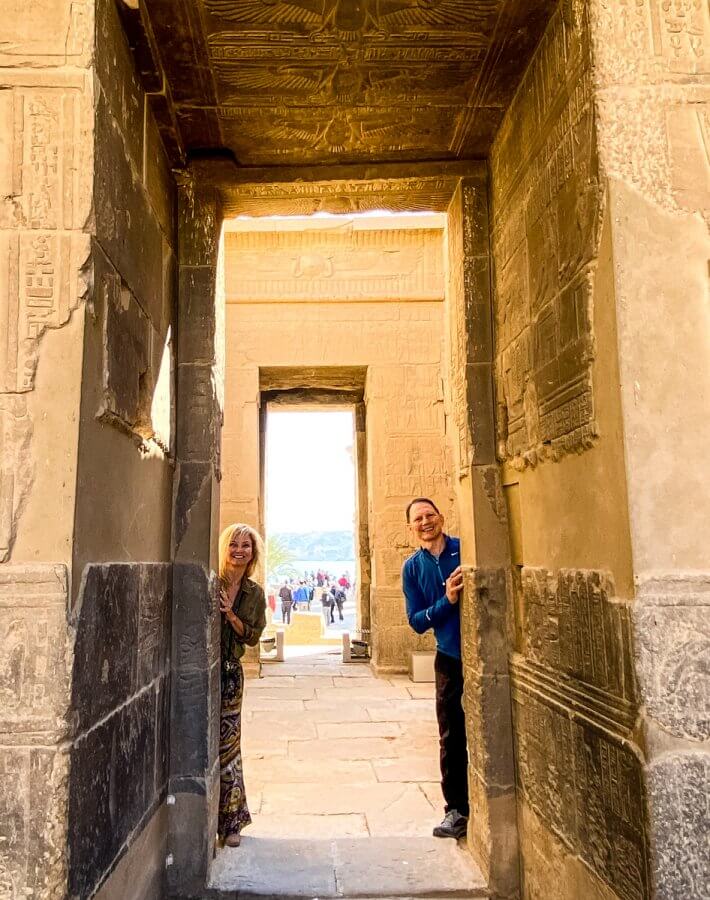
Fun and games on ancient hallowed grounds. Peek a boo!
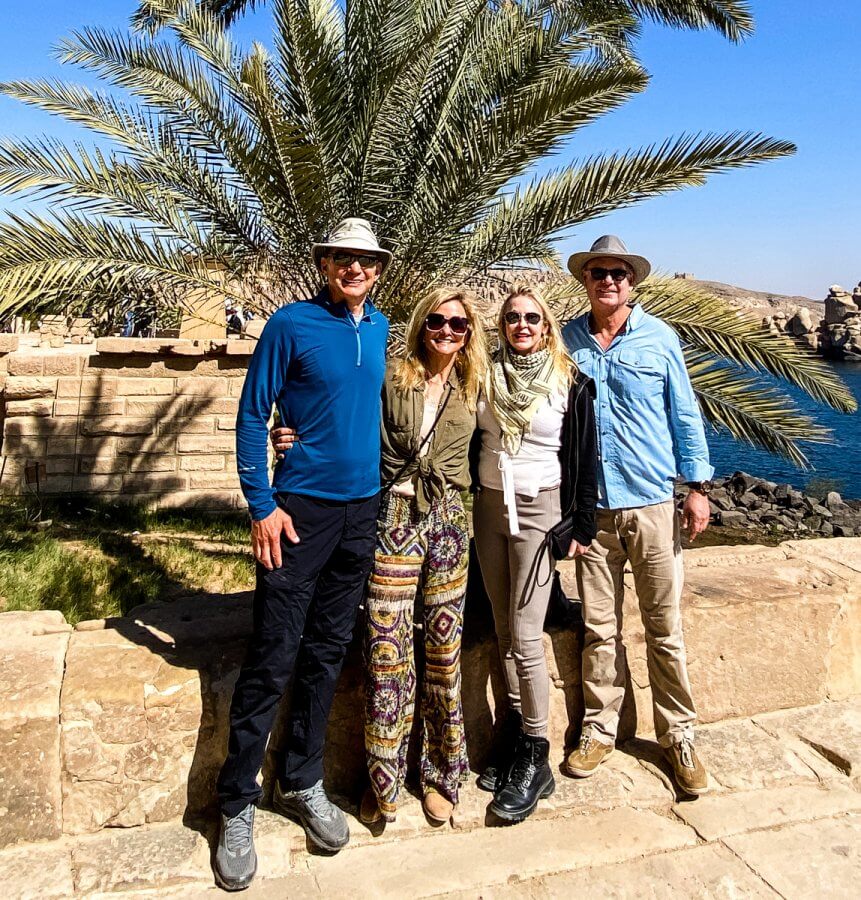
Next stop: the Granite Quarries, which supplied ancient Egyptians with most of the hard stone used in their pyramids and temples. Giant blocks of stone from the quarry – which is in the southern part of Egypt at Aswan – were transported down the Nile river to monuments hundreds of miles away.
Here we saw the Unfinished Obelisk, which was never removed from the quarry. The work on the Unfinished Obelisk had been abandoned due to clearly visible cracks that appeared in the granite, and the huge structure, which is partly connected to the parent rock, has been left in situ.
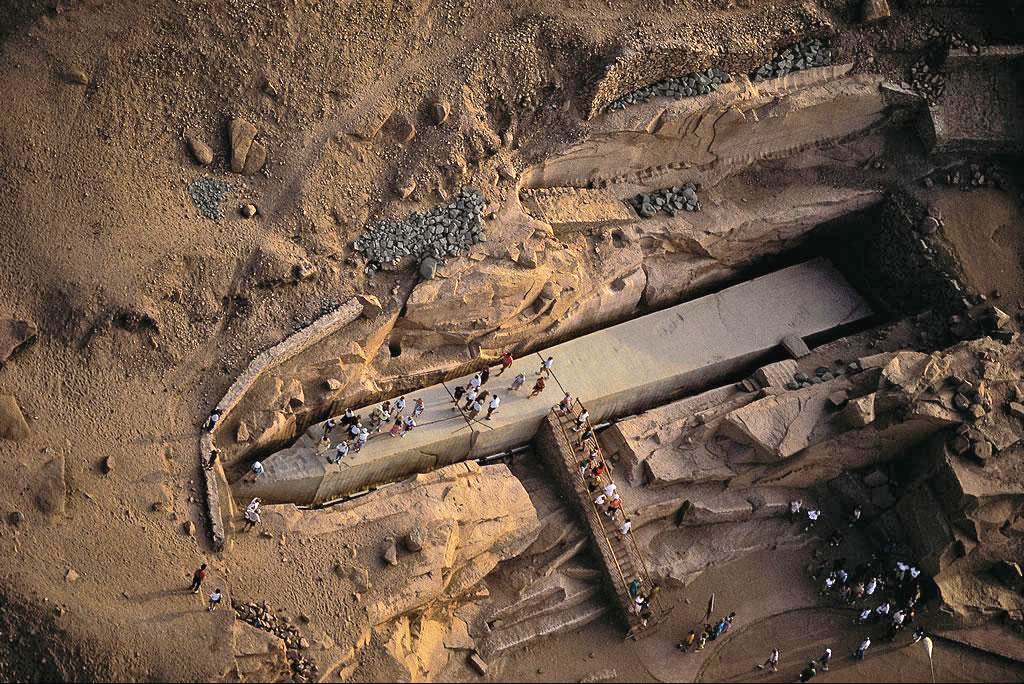
The largest known Egyptian obelisk is called the “unfinished obelisk”, which today can be found exactly where it was once mostly-carved from the solid bedrock. It is estimated that a block of granite this size would easily weigh more than a 1,100 tons, and the obelisk would have reached nearly 140 feet high. 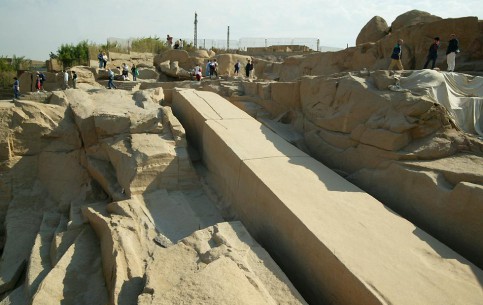
A view from the base.
Thanks to the nice weather we were able to take a ride on a felucca (a typical Egyptian sail boat) around Elephantine Island, Lord Kitchener’s Botanical Gardens and the Agha Khan Mausoleum.
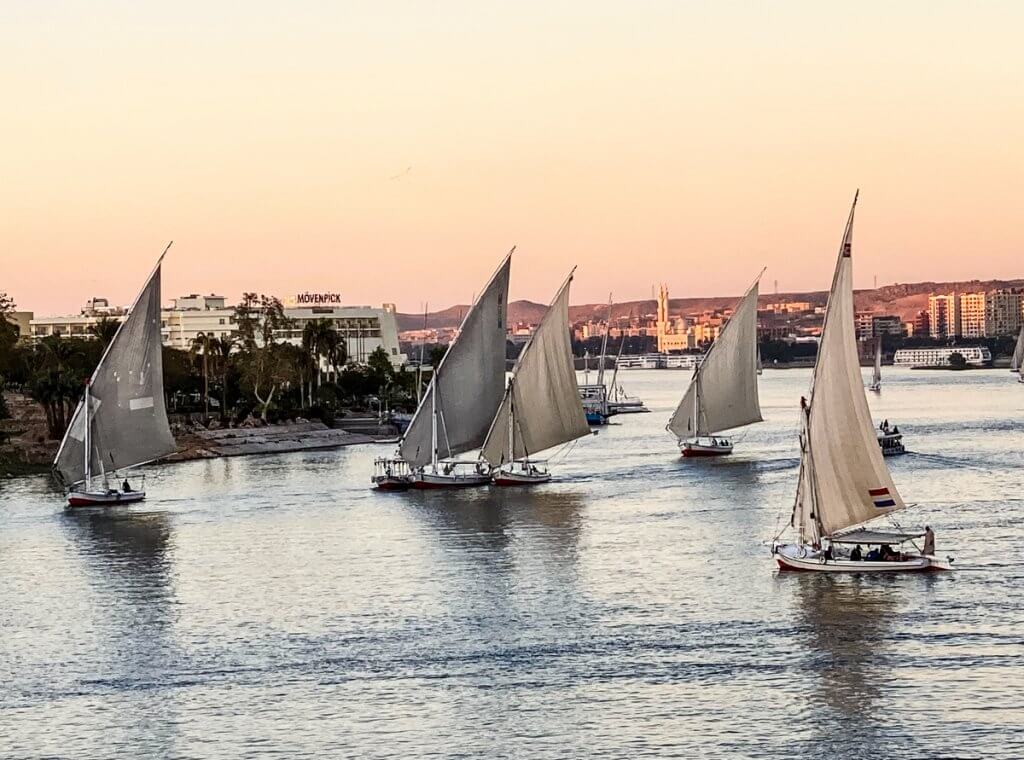
A fleet of feluccas in the Nile at Aswan. 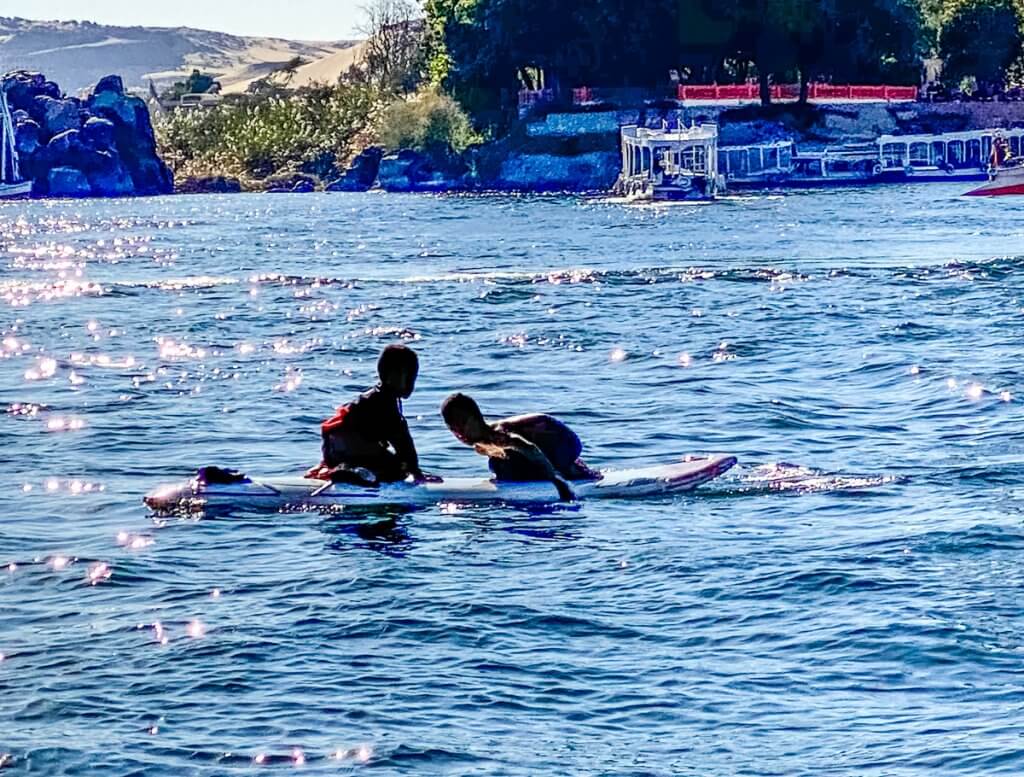
These two little guys were paddling a surfboard among the feluccas peddling their wares for sale.
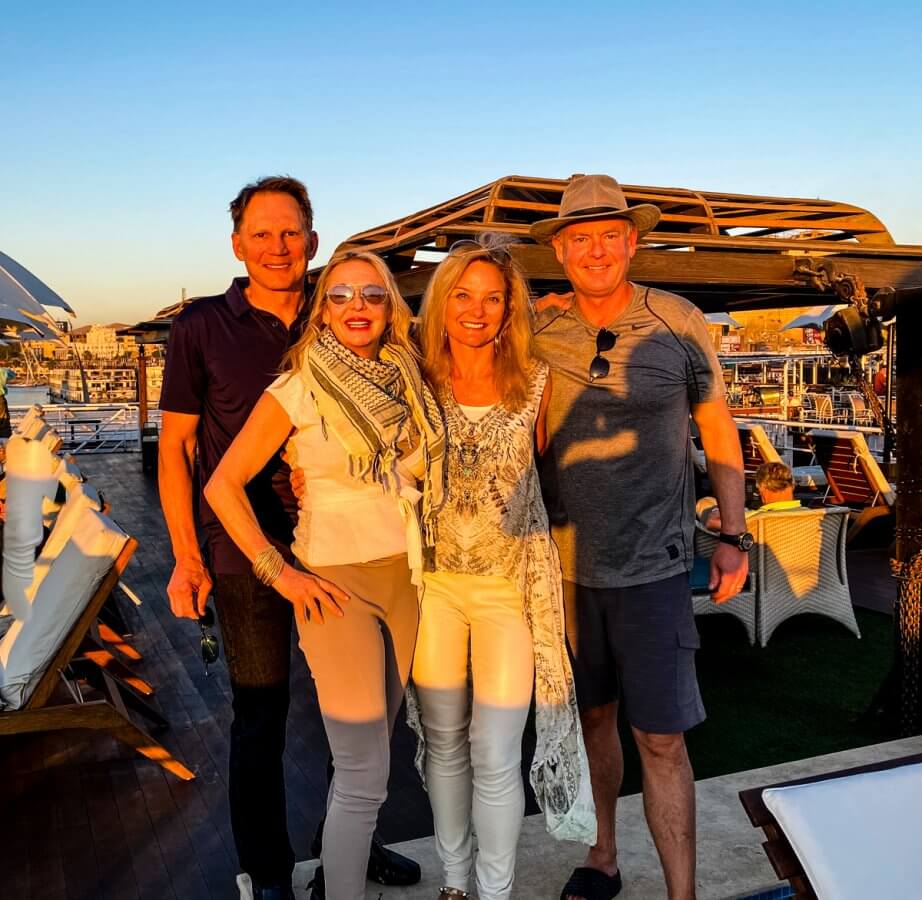
We had wonderful late afternoon light for a pic… 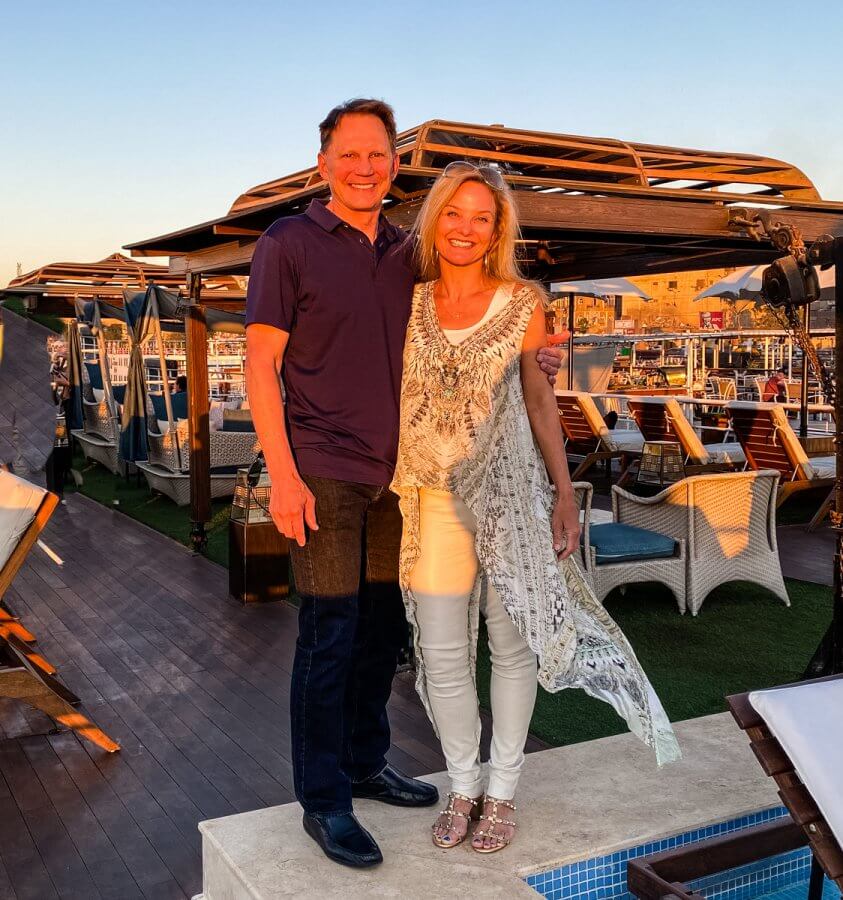
…or two.
Our farewell feast that evening was a proper dinner gala, complete with white-gloved waiters serving gourmet cuisine. A traditional folkloric show, a Whirling Dervish show and a not-so-traditional conga line followed.

We had a wonderful evening. 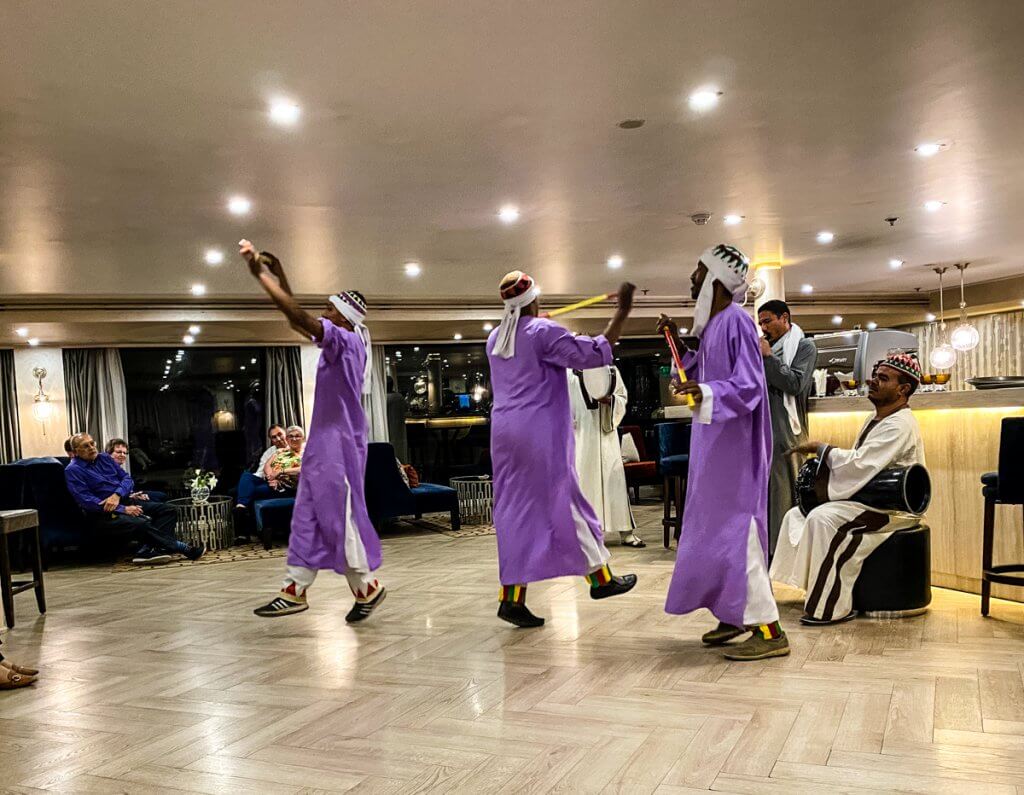
Entertainment at the final gala. 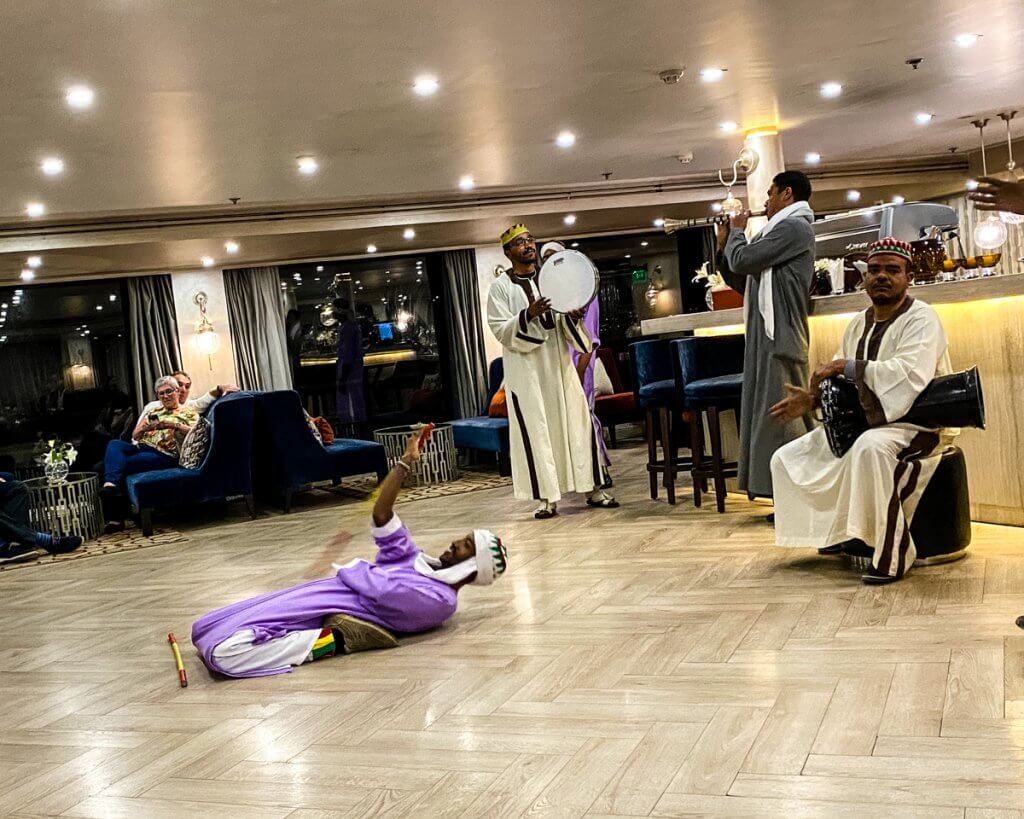
Talented folklore performers. 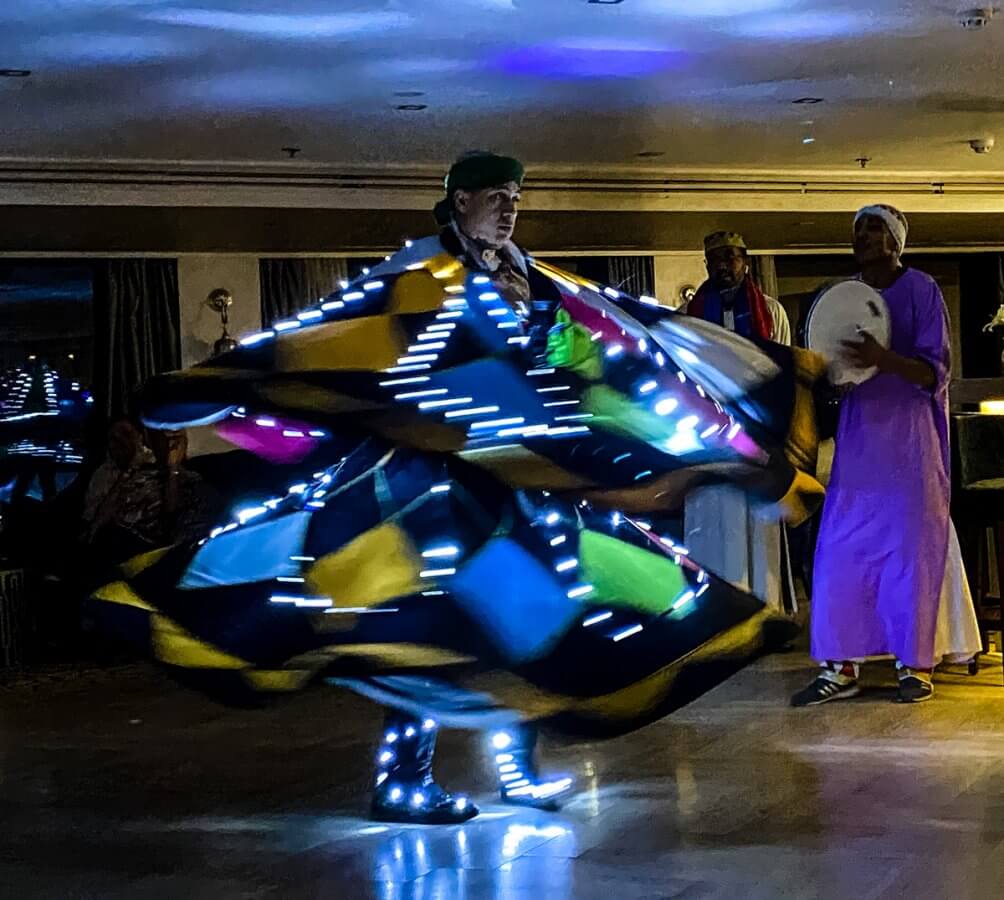
Whirling dervish at the final gala. 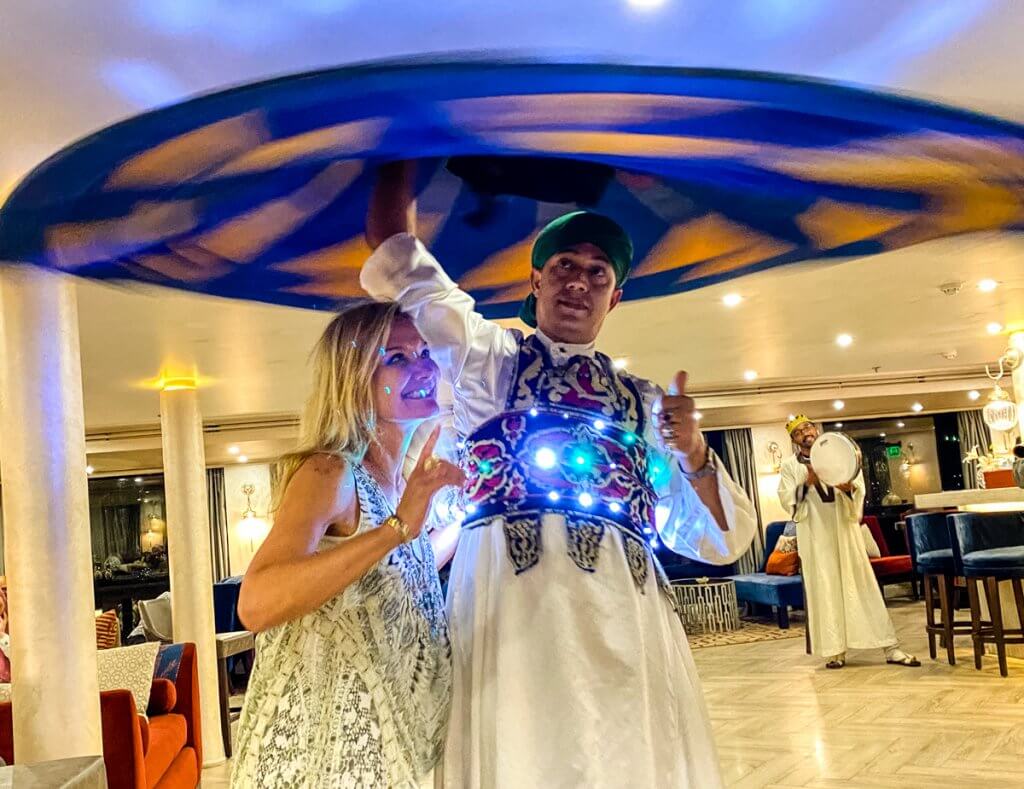
Picks up a member of the audience. 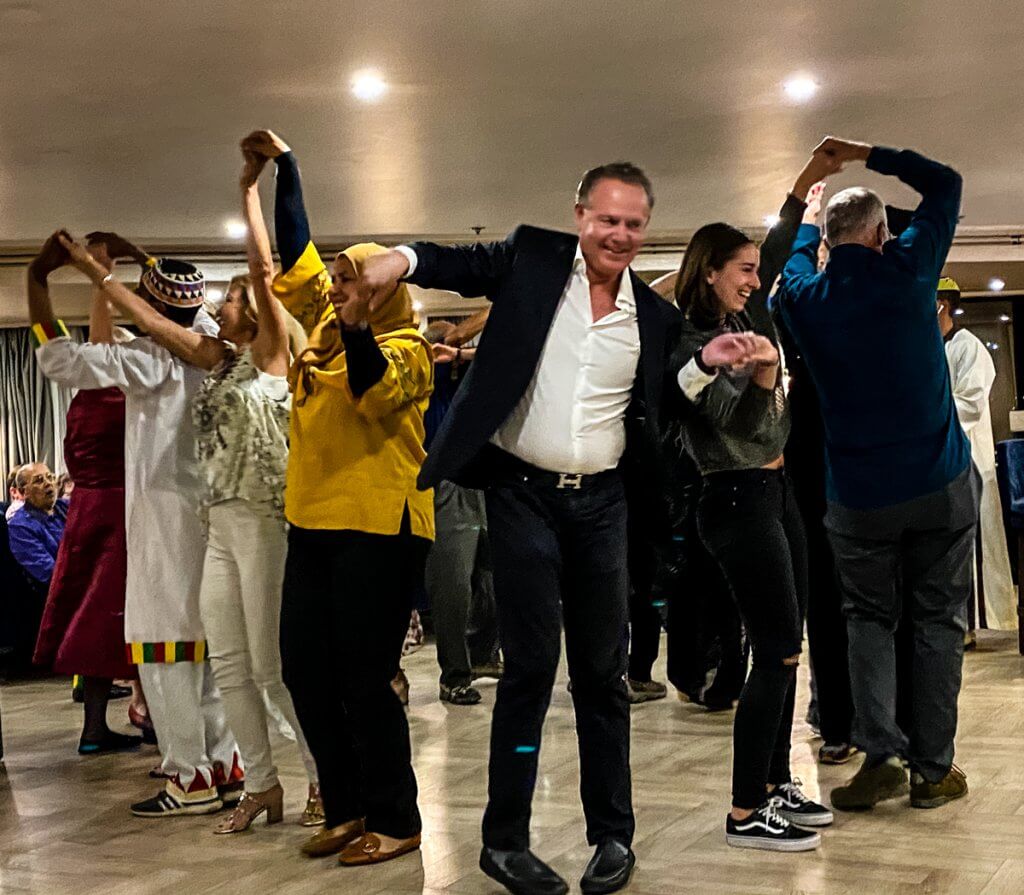
Additional audience members join in. 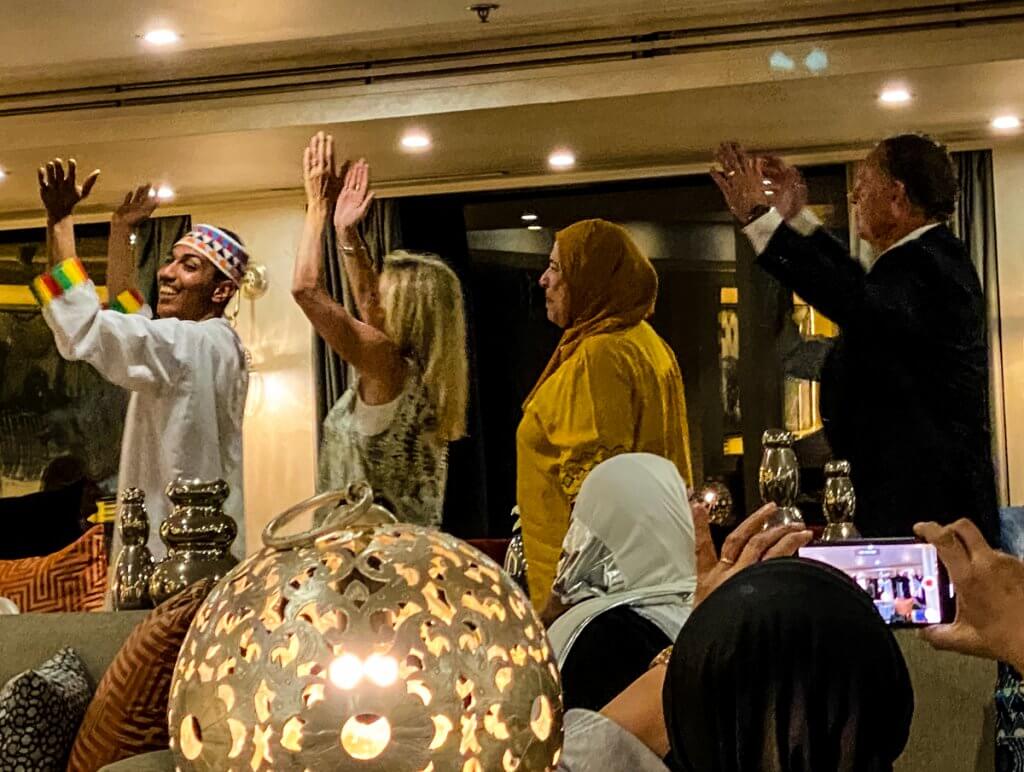
And form a…. 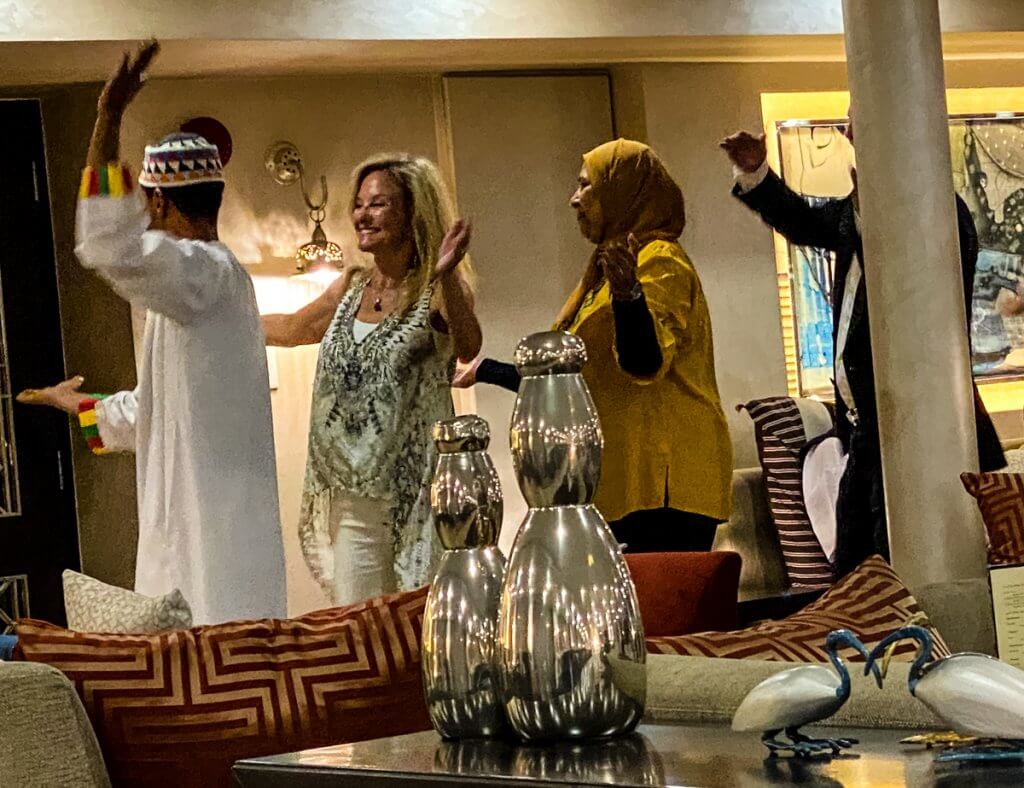
Conga line!! 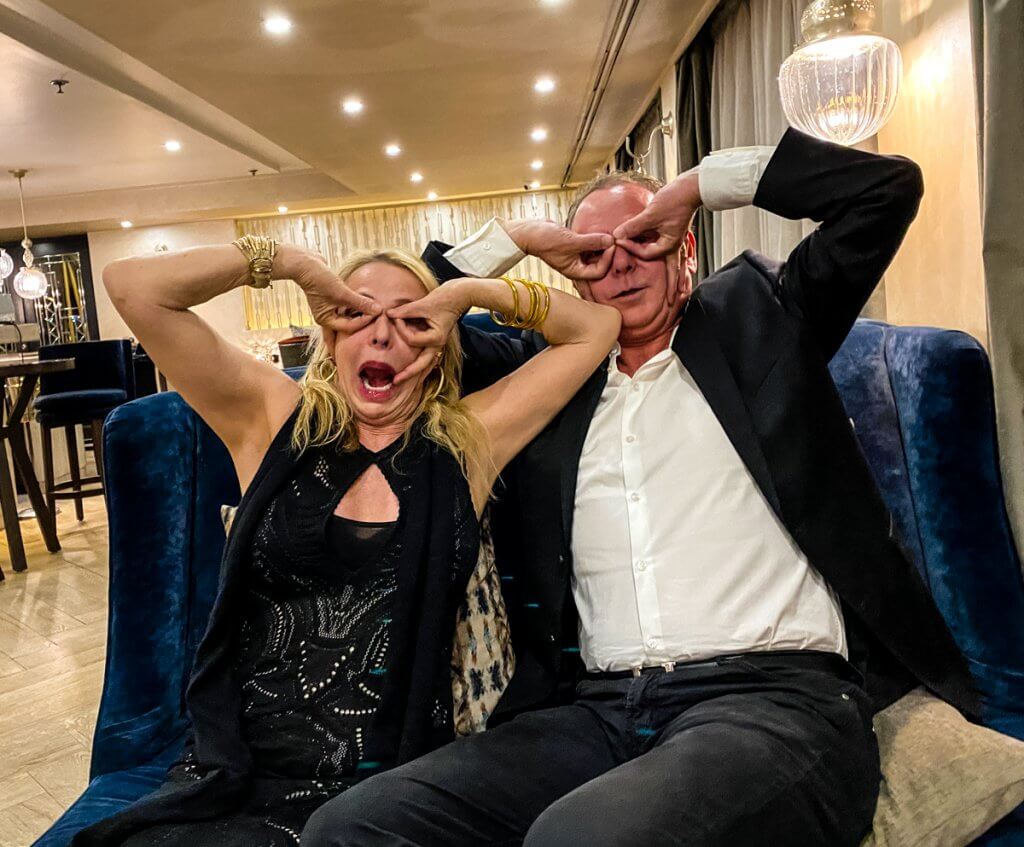
The final entertainment of our Nile Cruise…

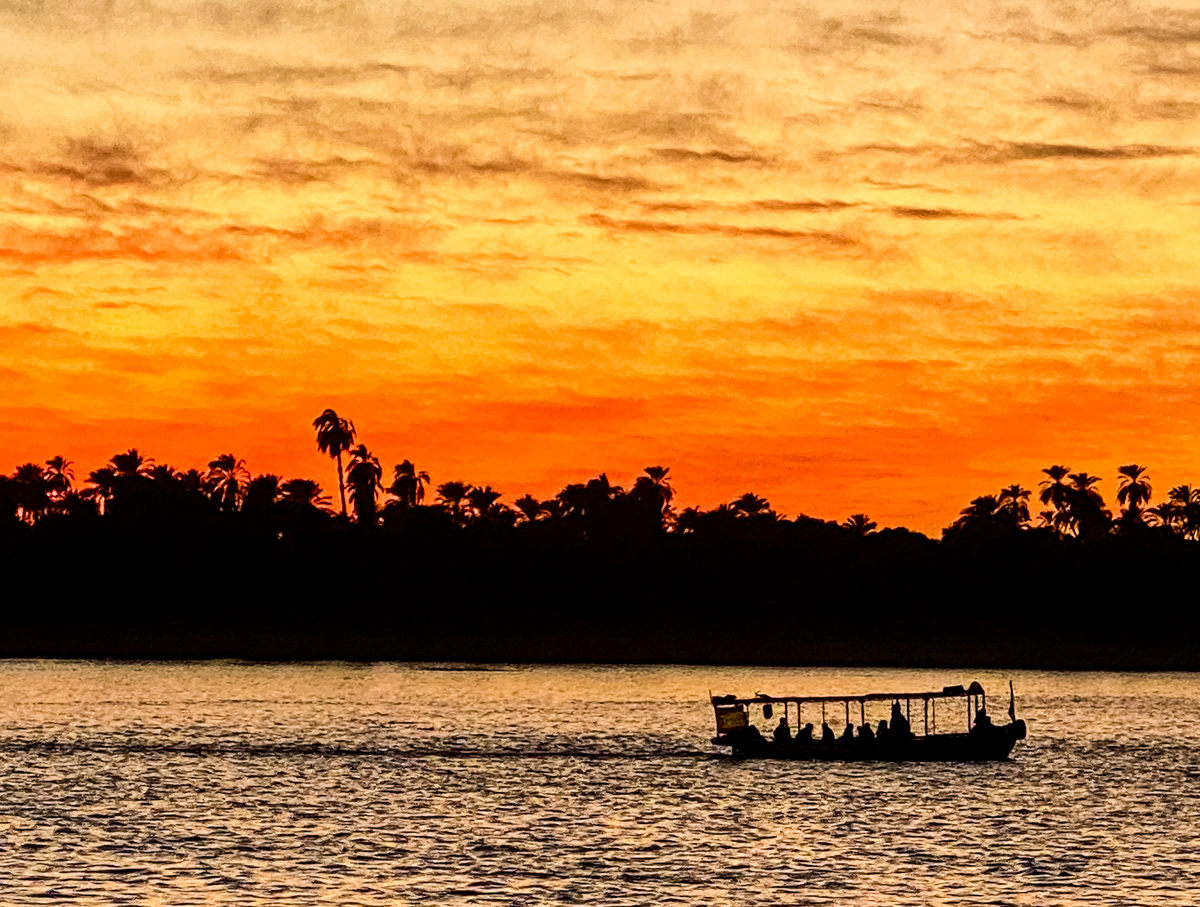

what a wonderful adventure!!
You’re too quick Willy – I added some stuff just now!
I have enjoyed EVERY INCH of hour journey because I did it a few years ago, but we started in Abel Simbal just above Aswan I think…amazing temple there which was also moved for preservation. What a majestic country it is, thanks for the memories and wonderful pictures
Val XX
Great Egypt posts TwoandFro!! You write an incredible blog and are awesome travel partners!
BTW, how does one go about acquiring two pairs of those Egyptian Bird God Goggles featured above? (Nizarat Waqia Horus)!!
Right back at ‘ya Billy … loved our trip with you sooo much!! We’re happy to know the Hicks ‘have goggles, will travel’!!